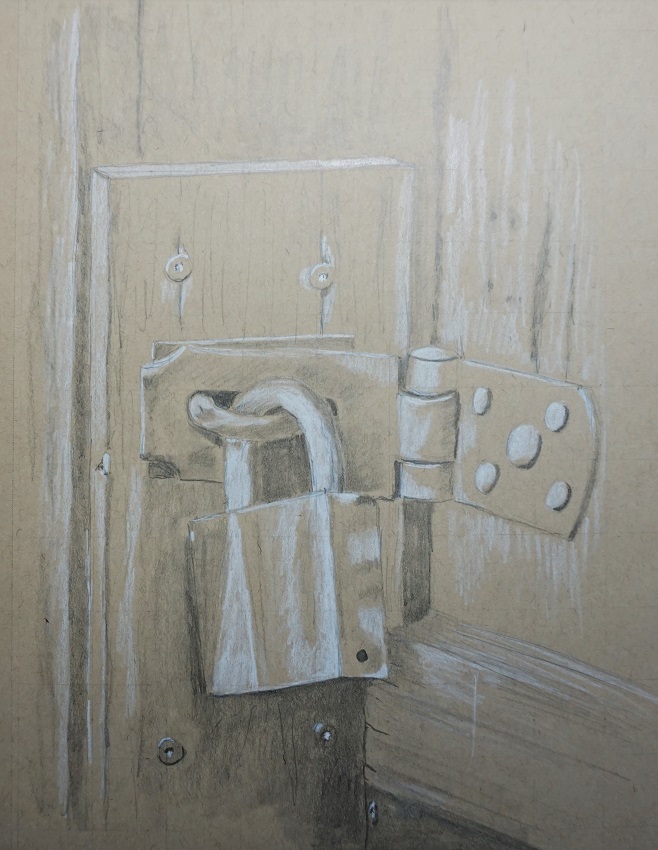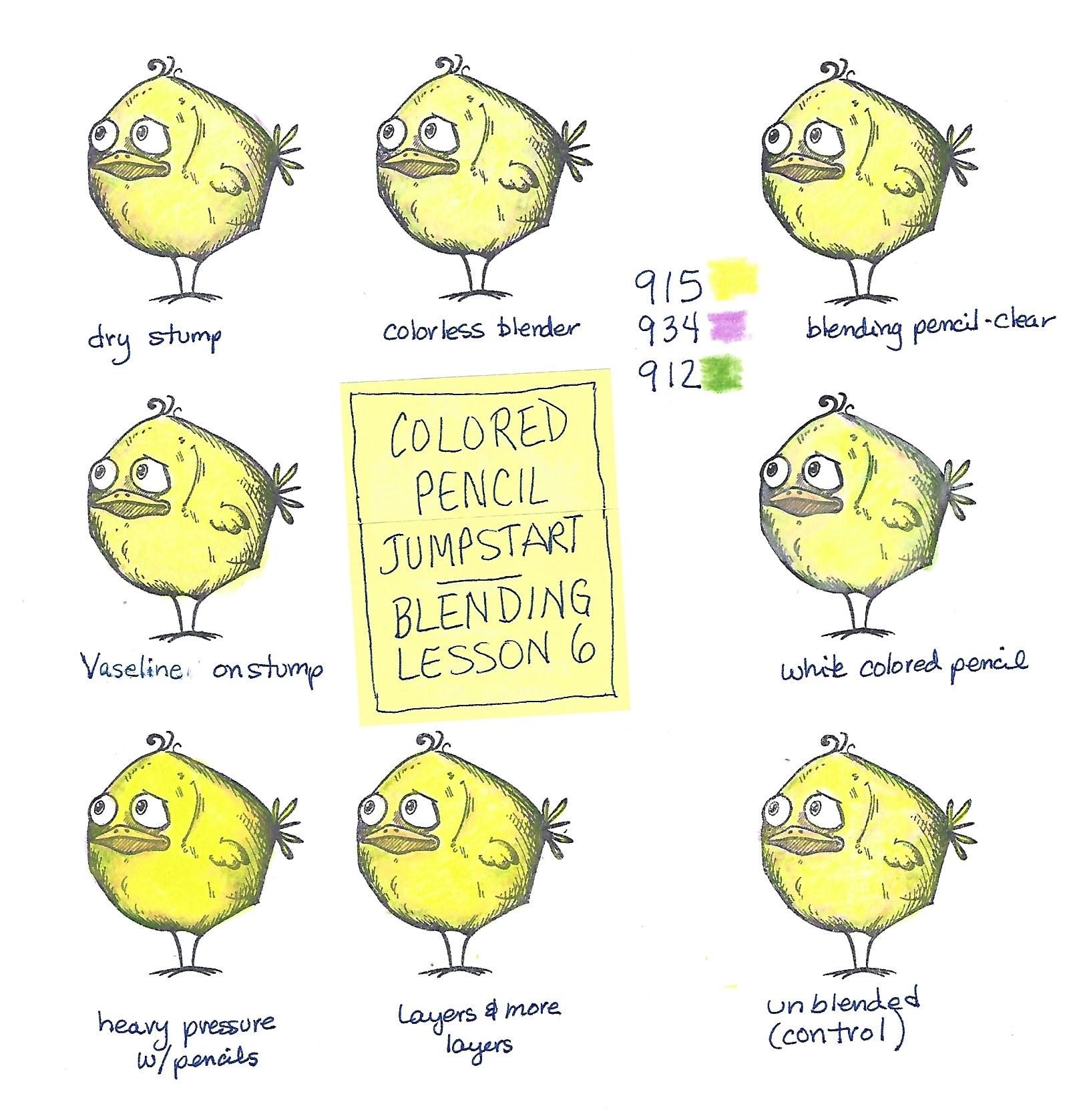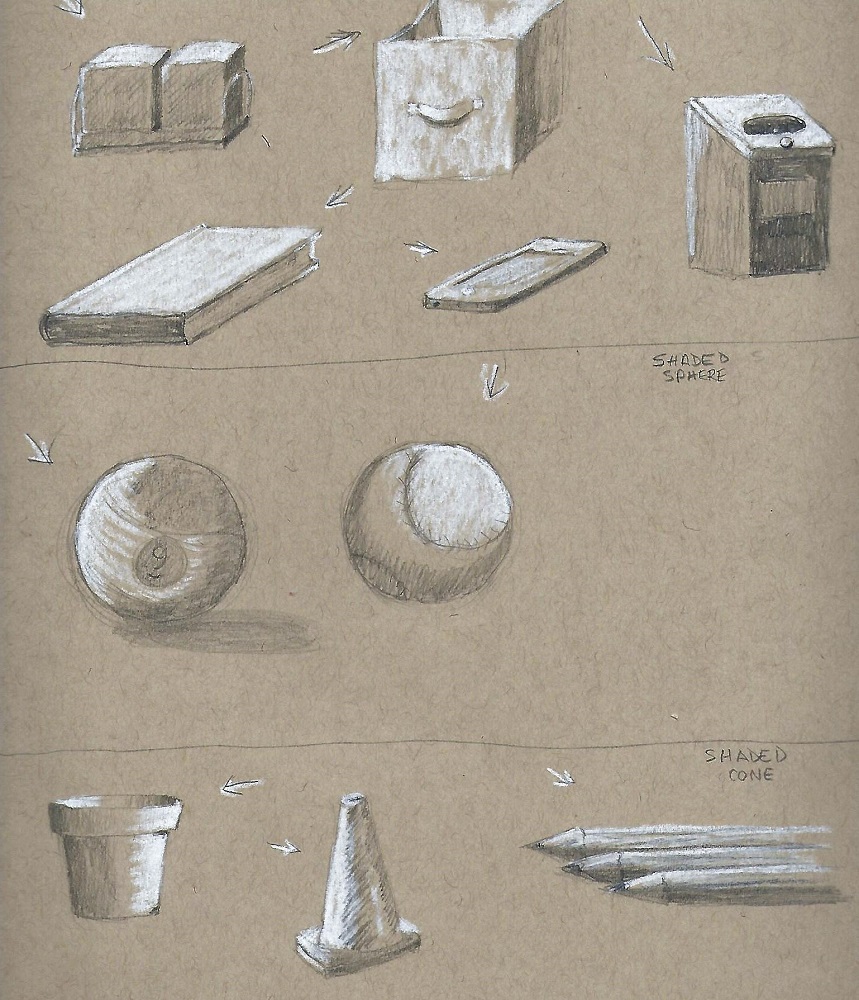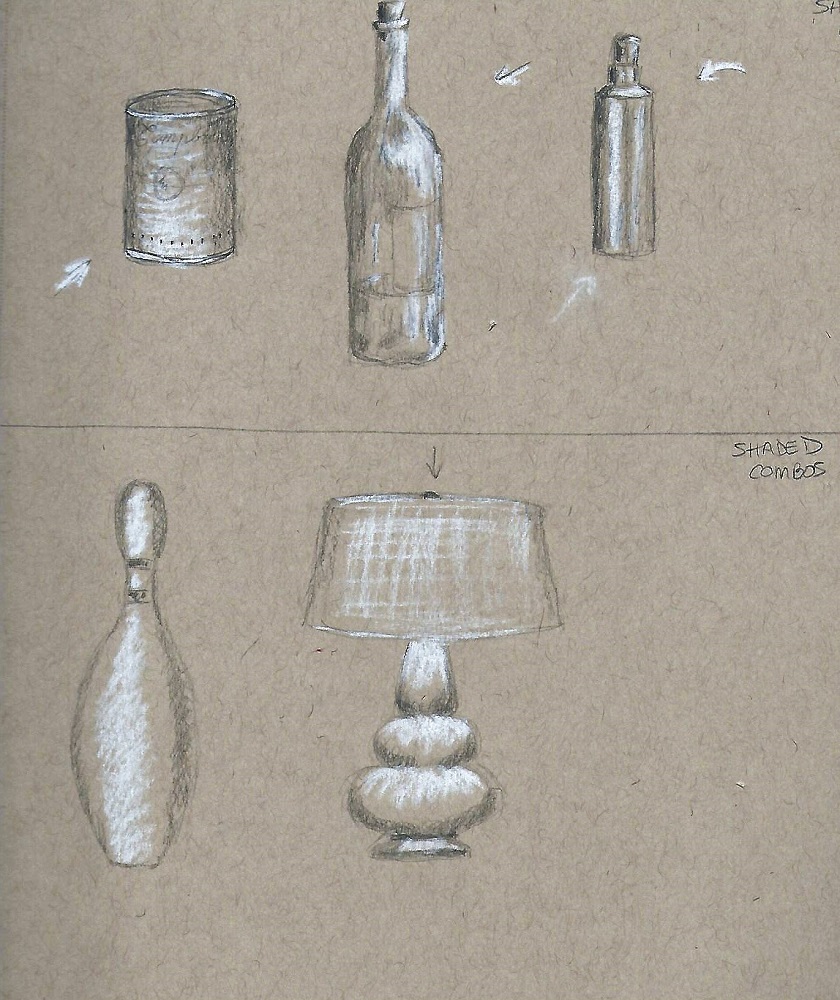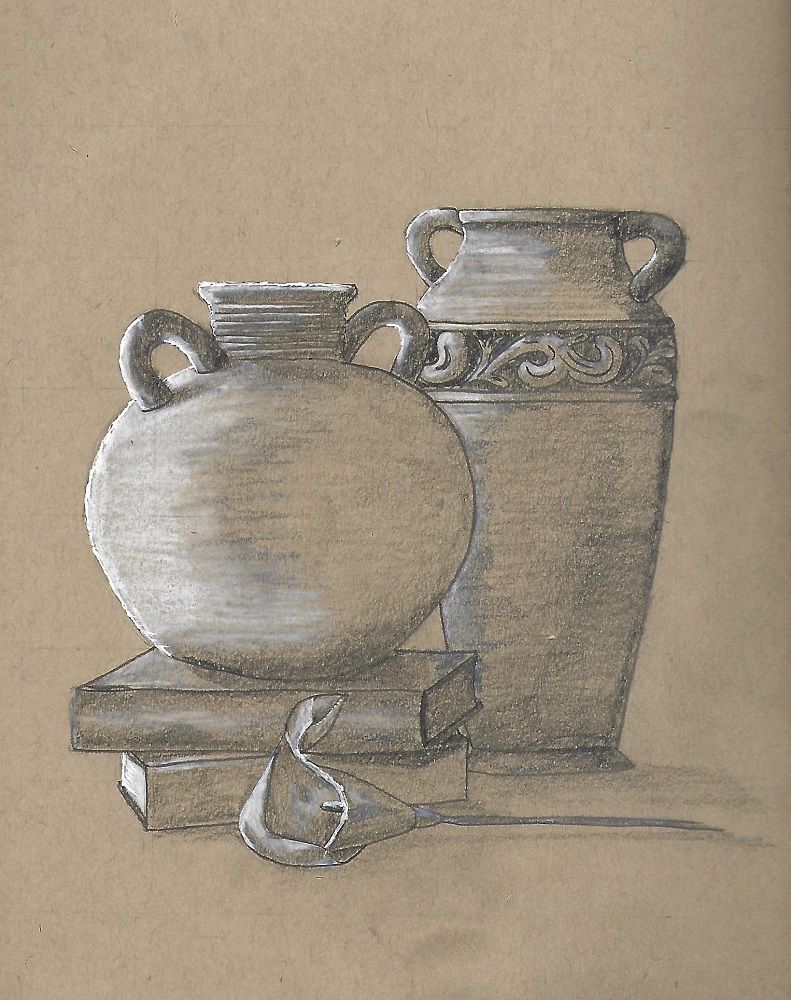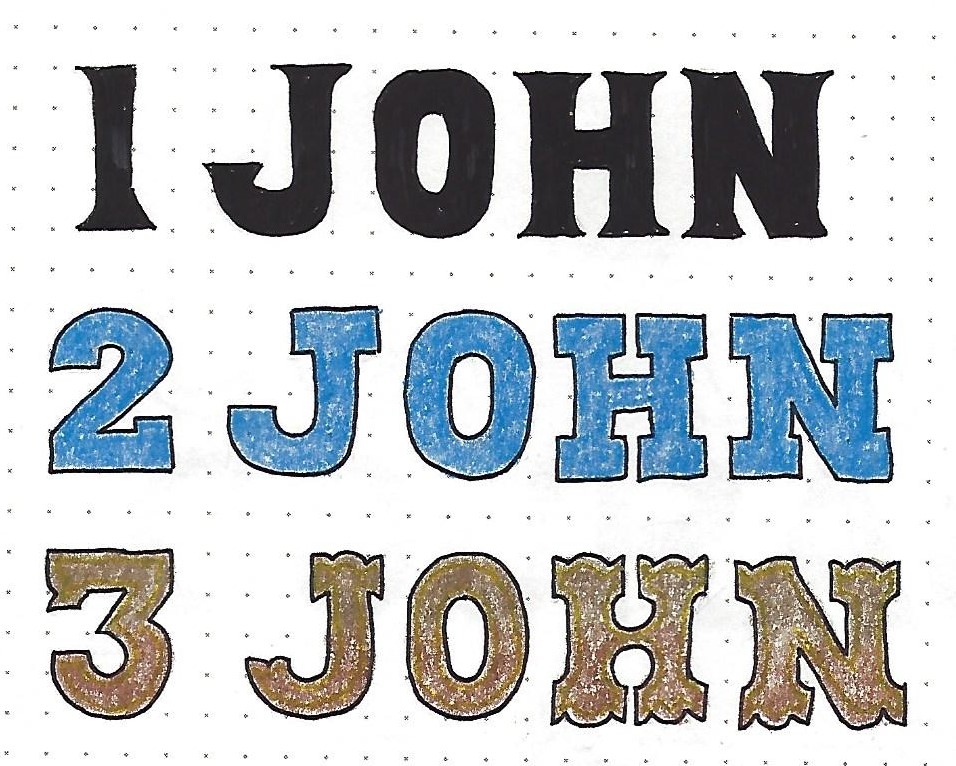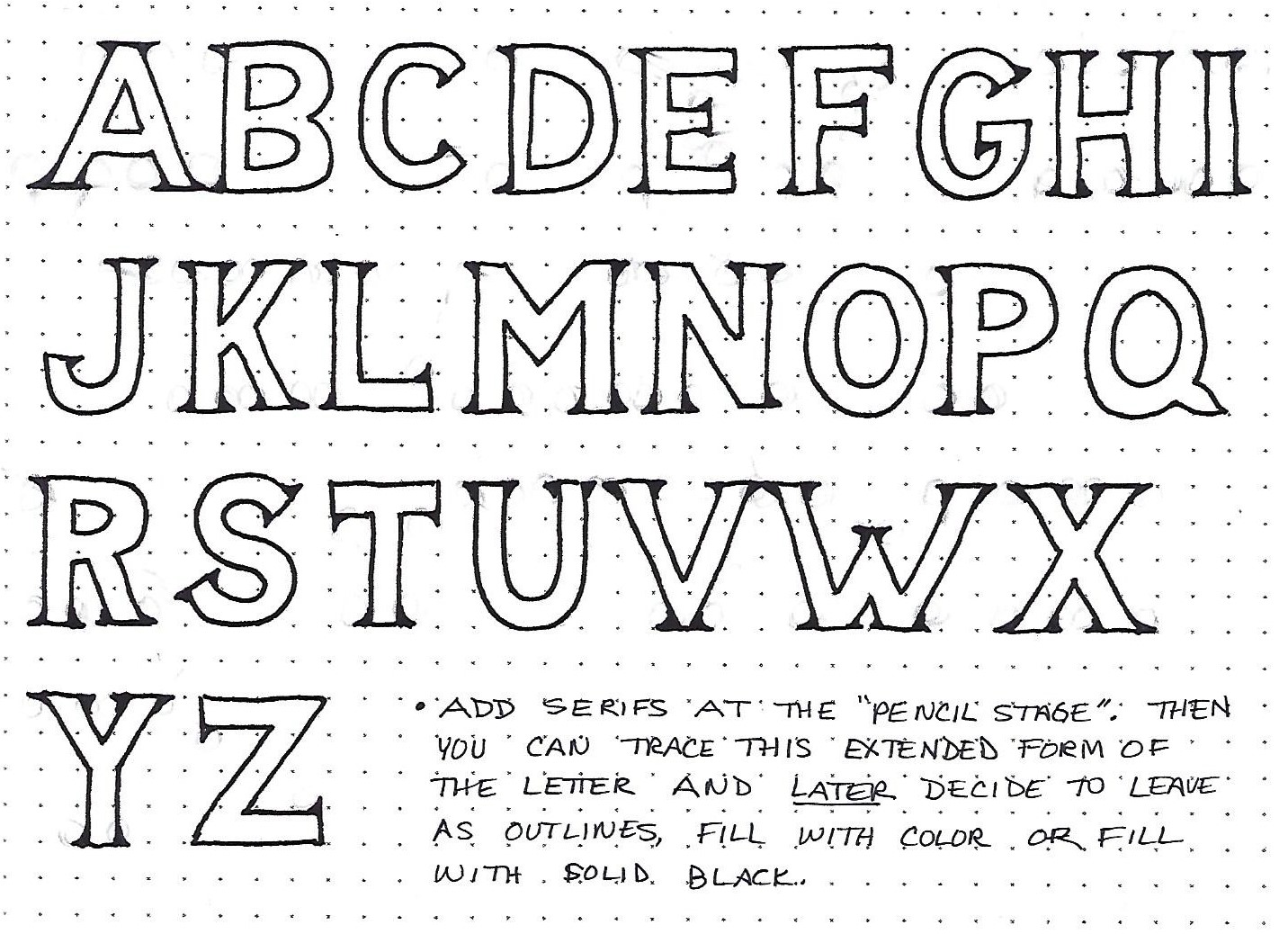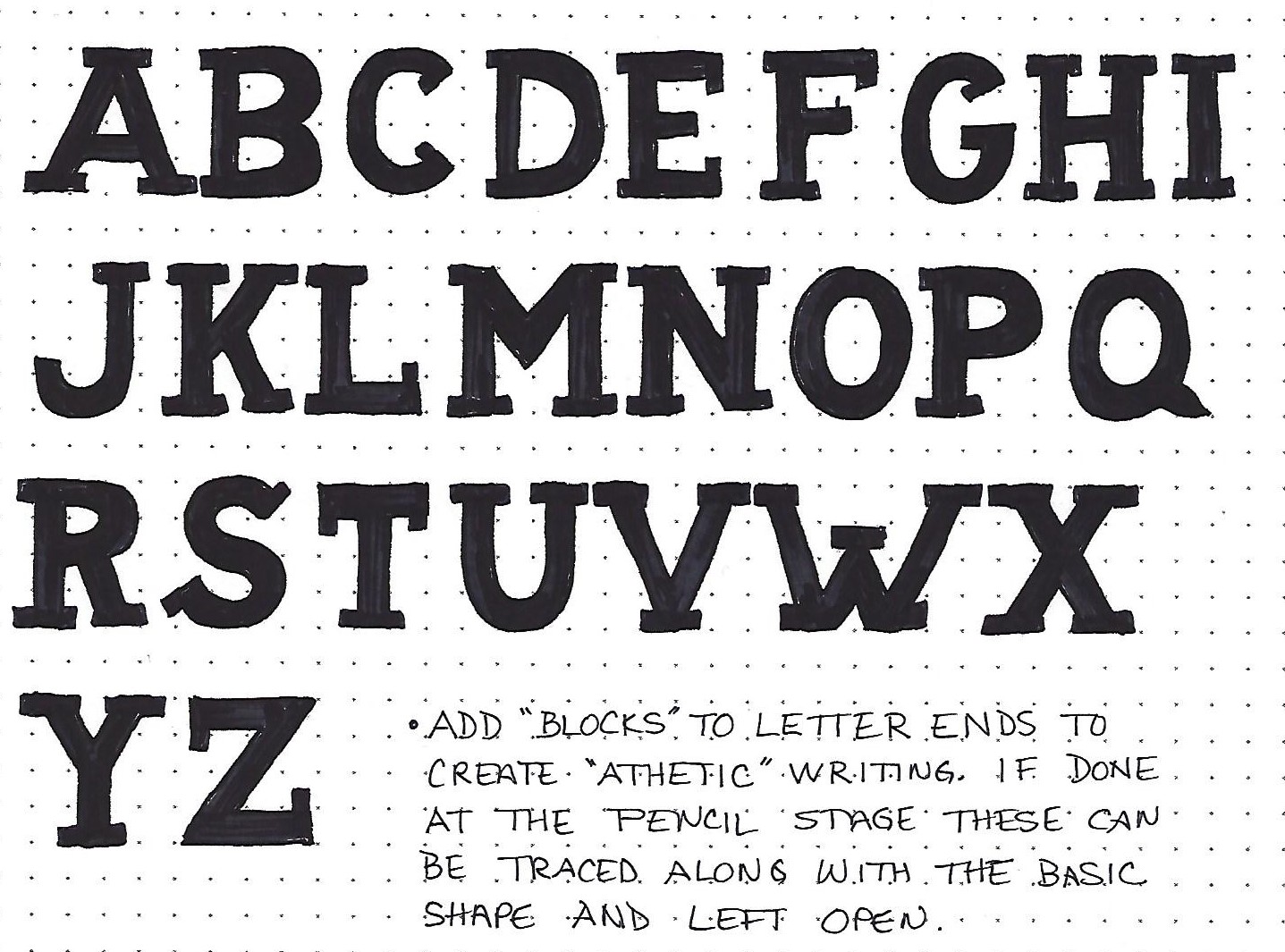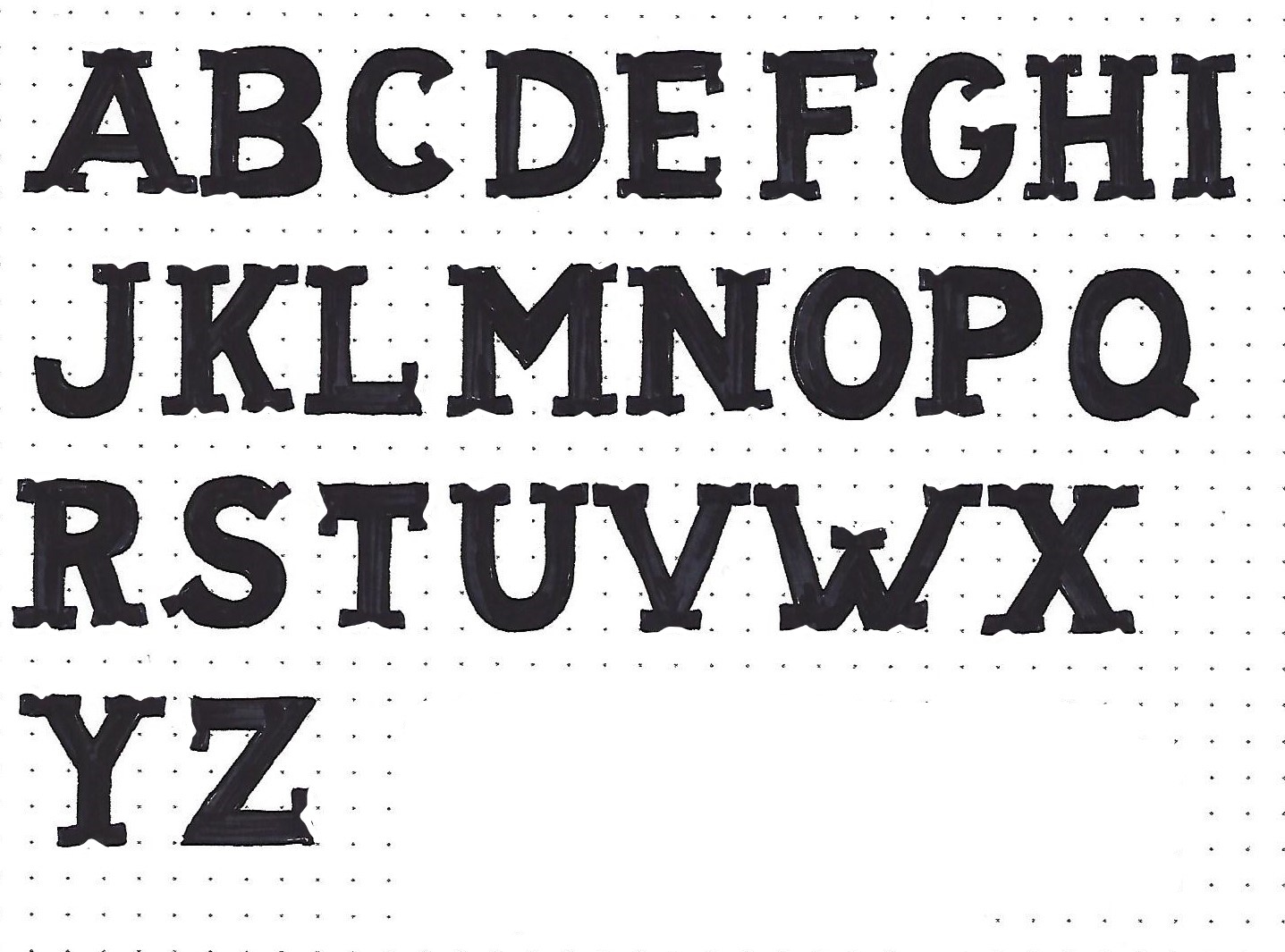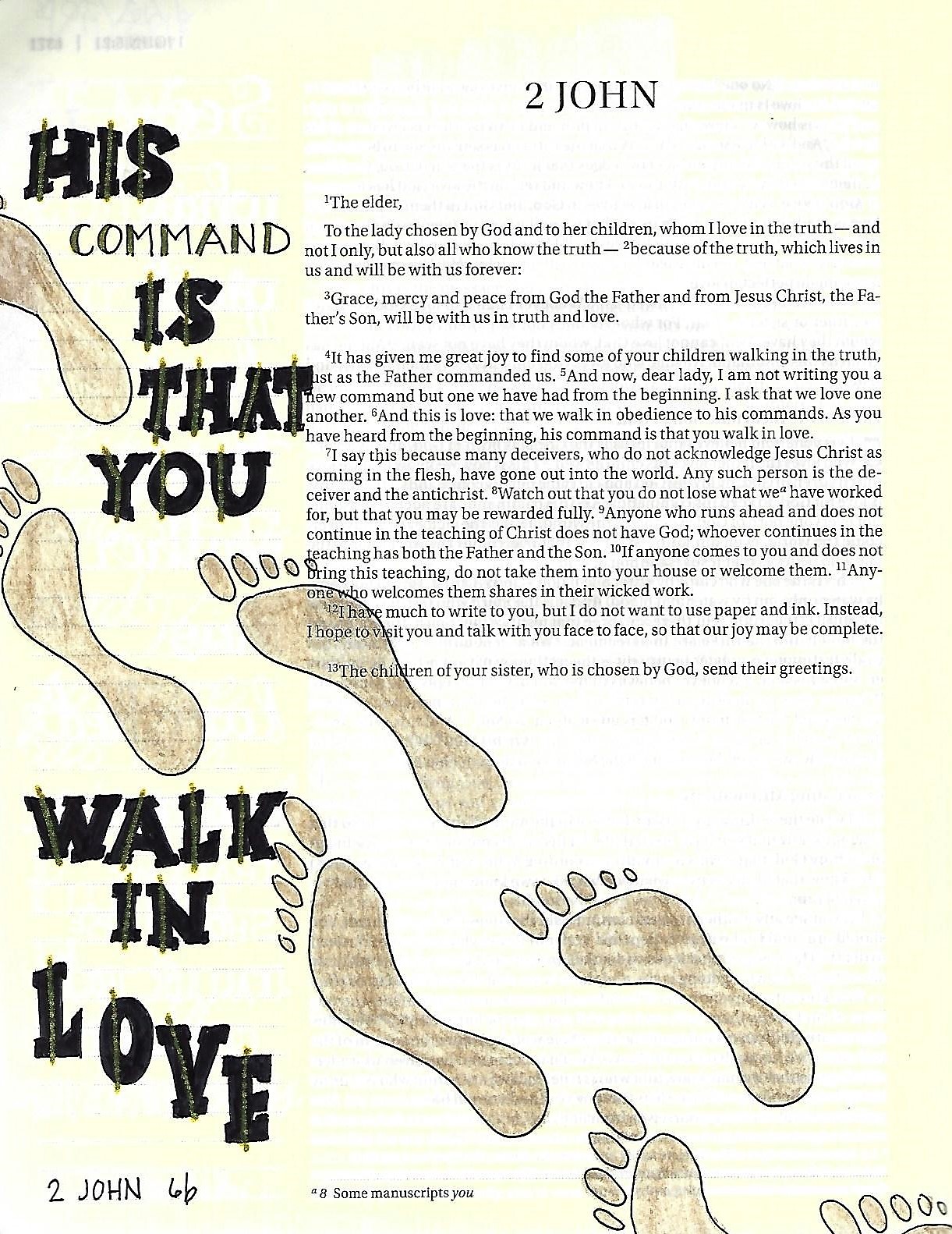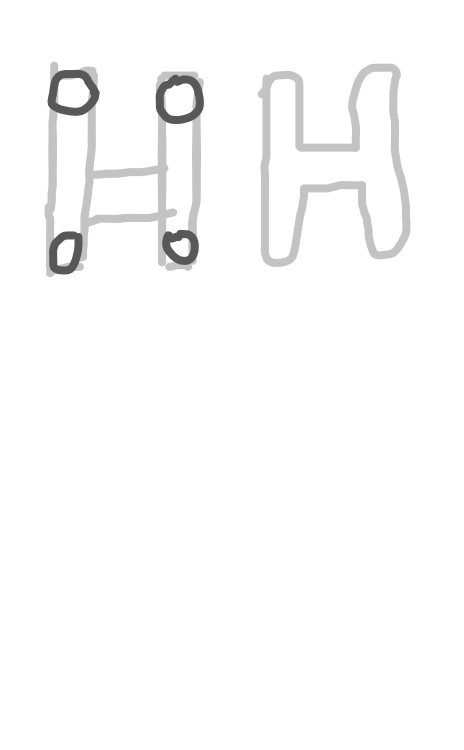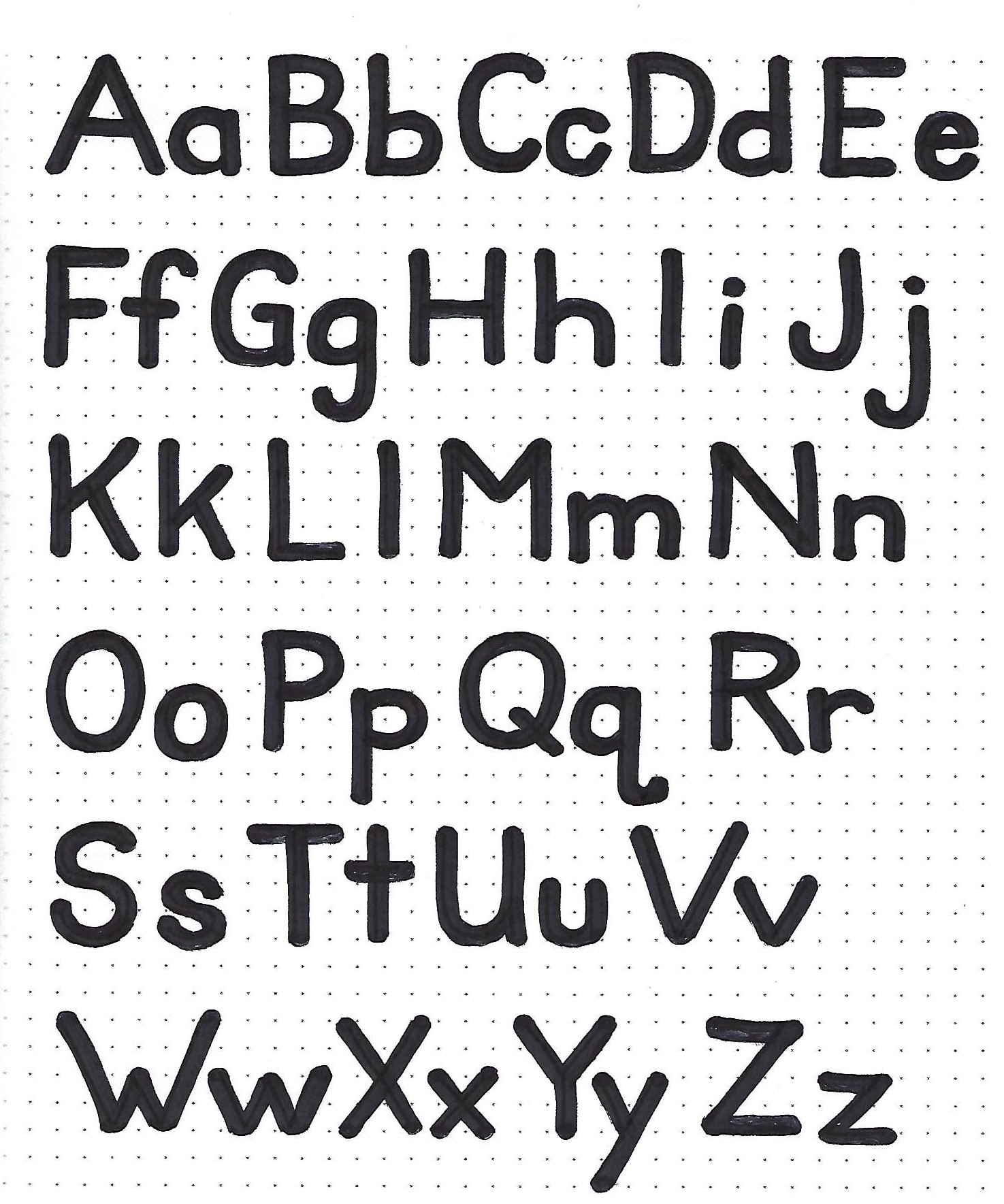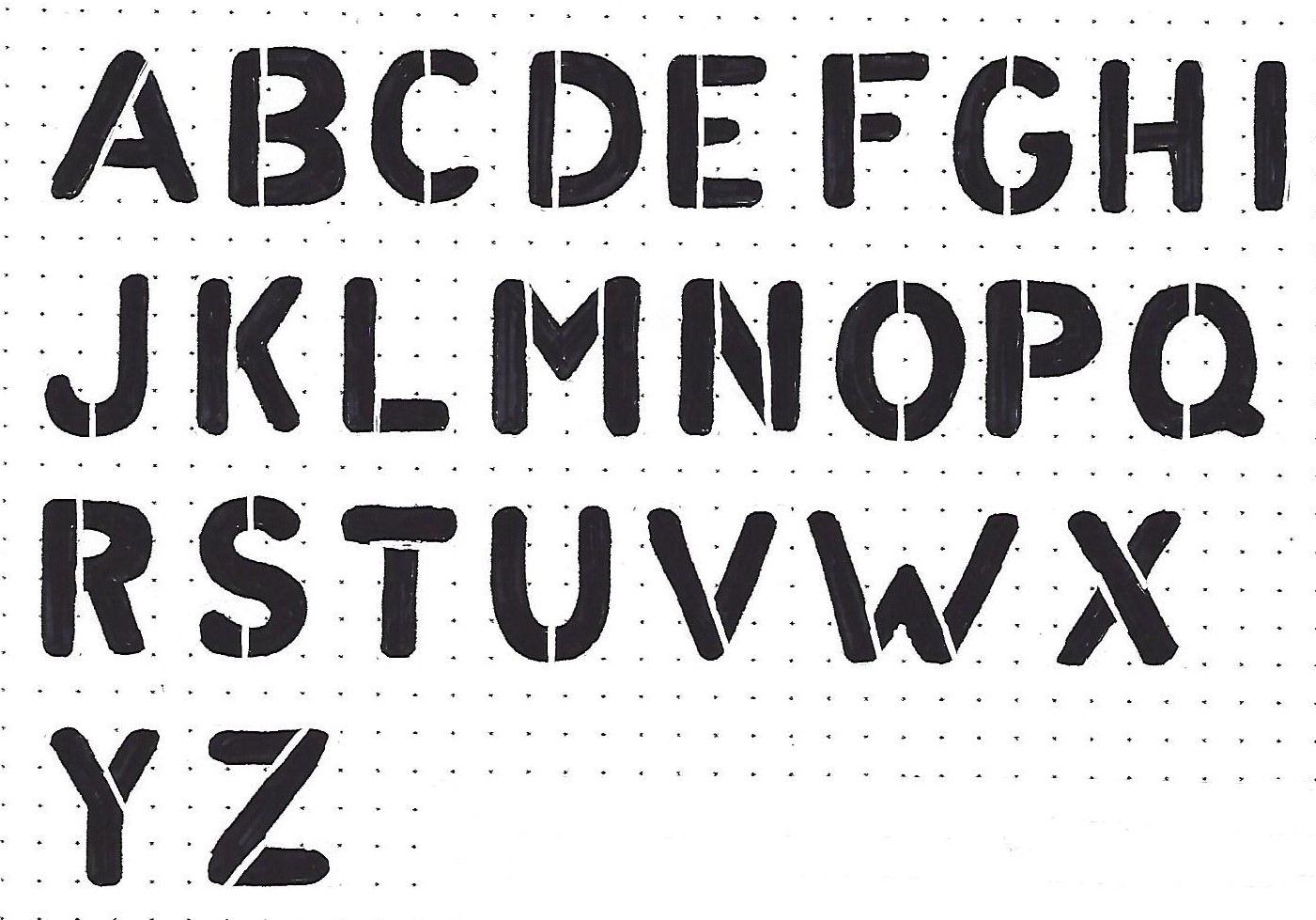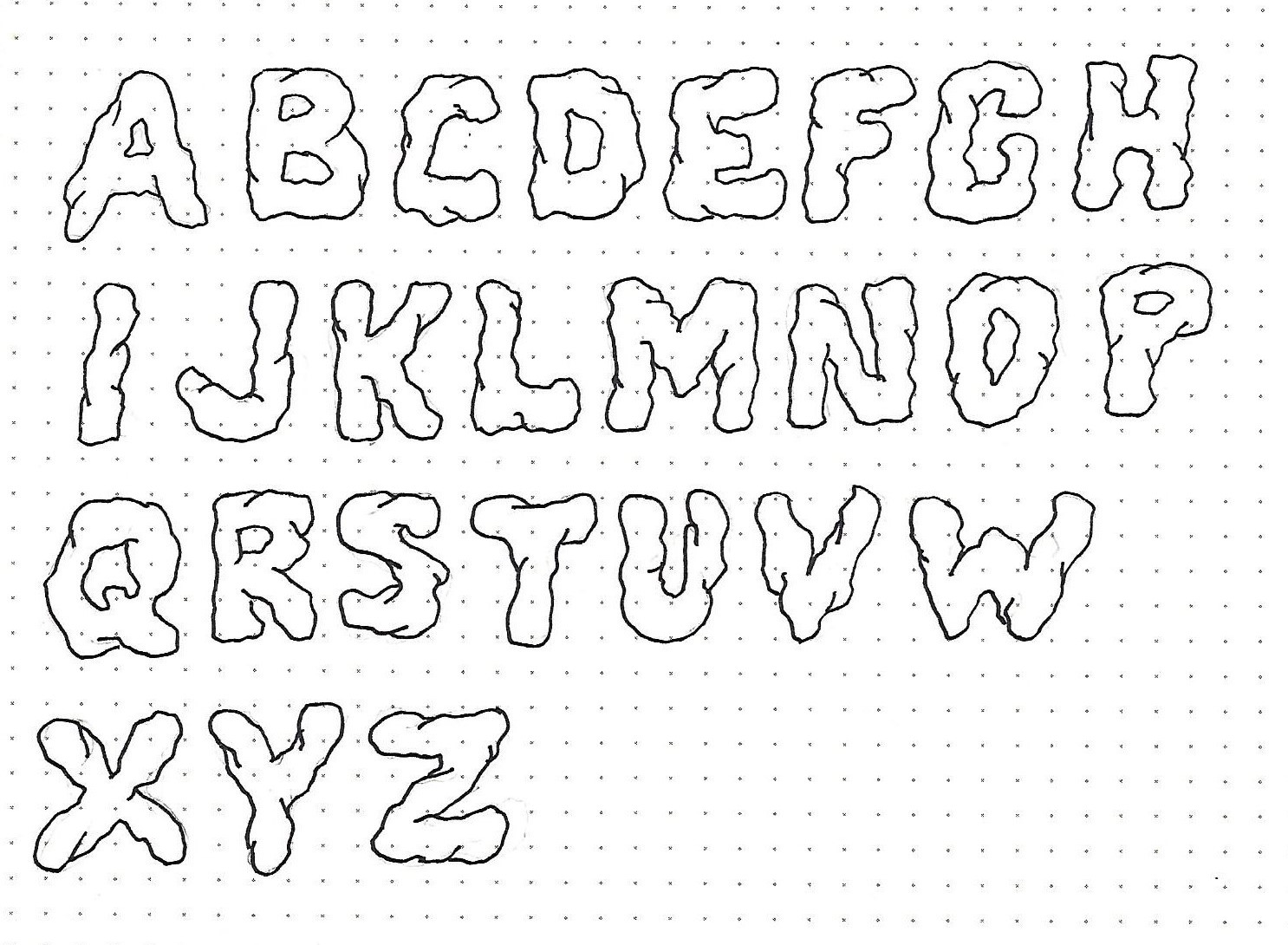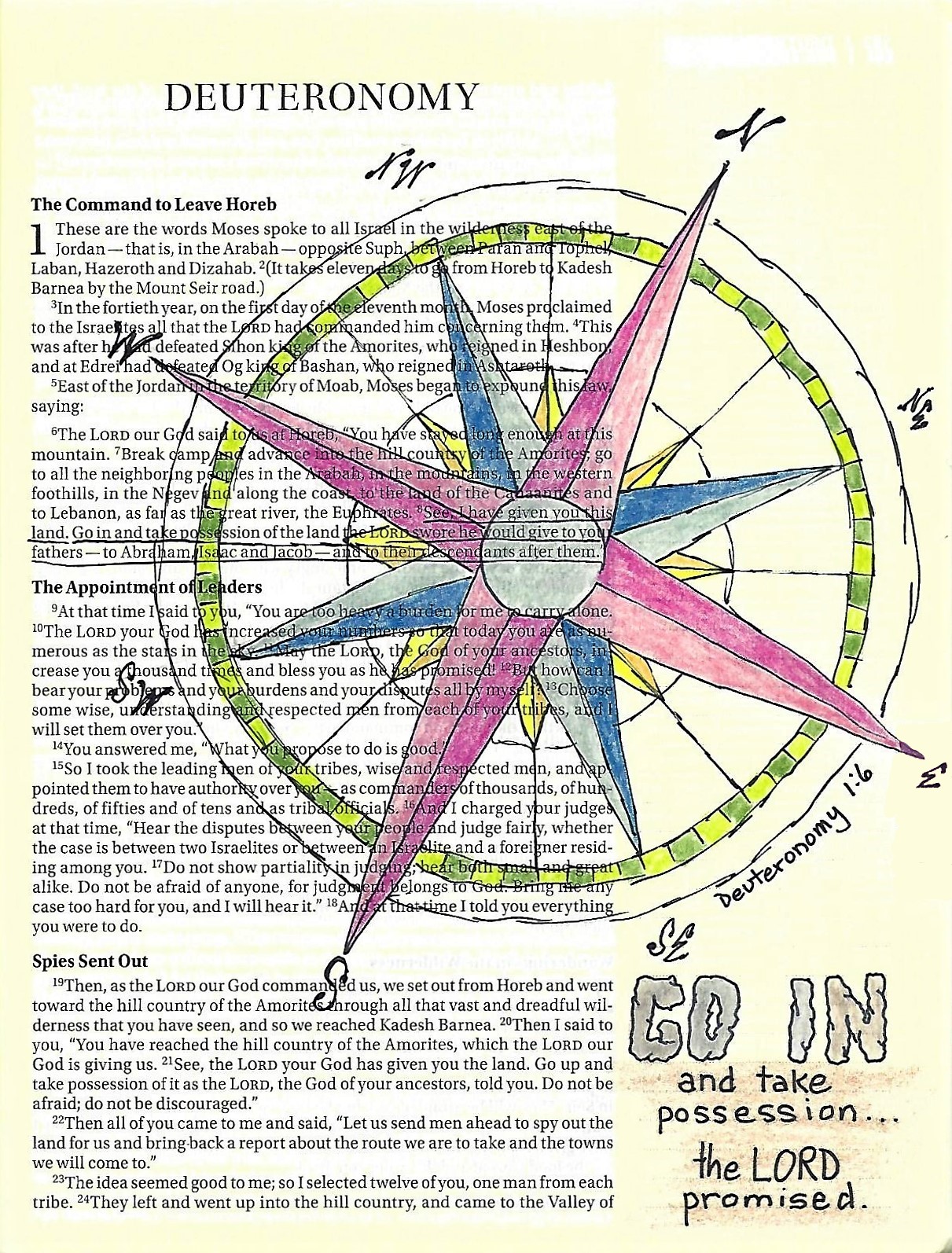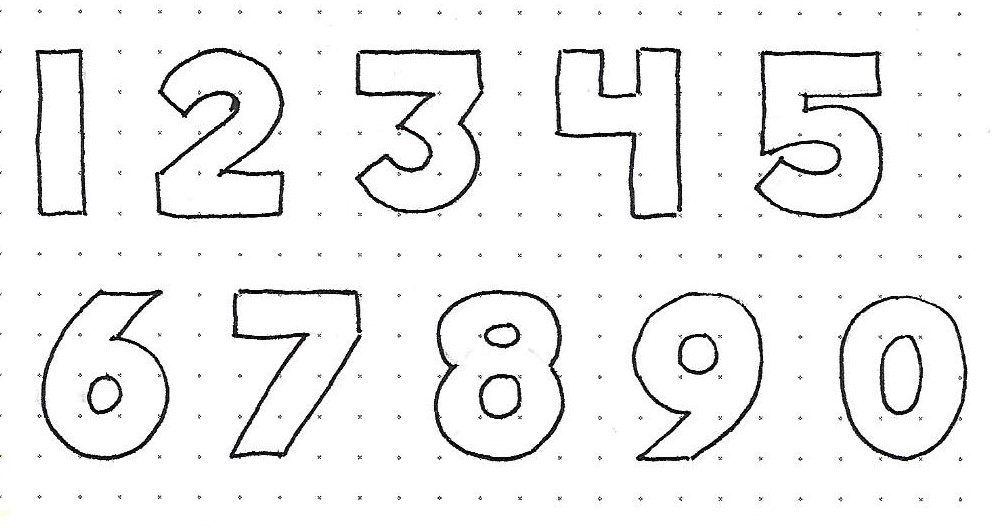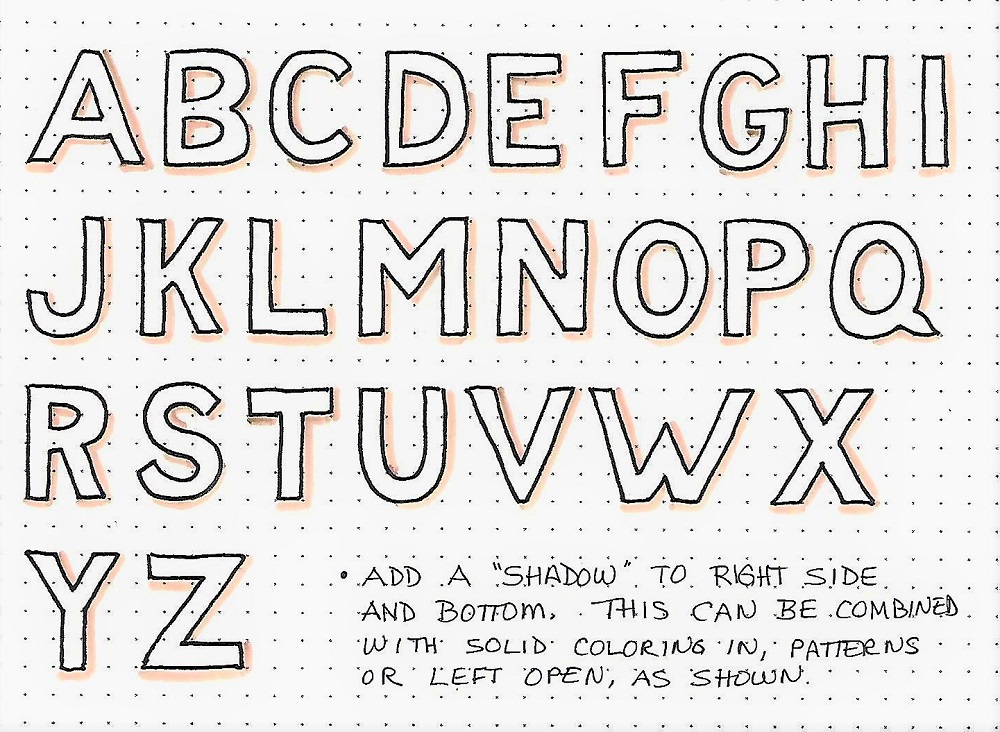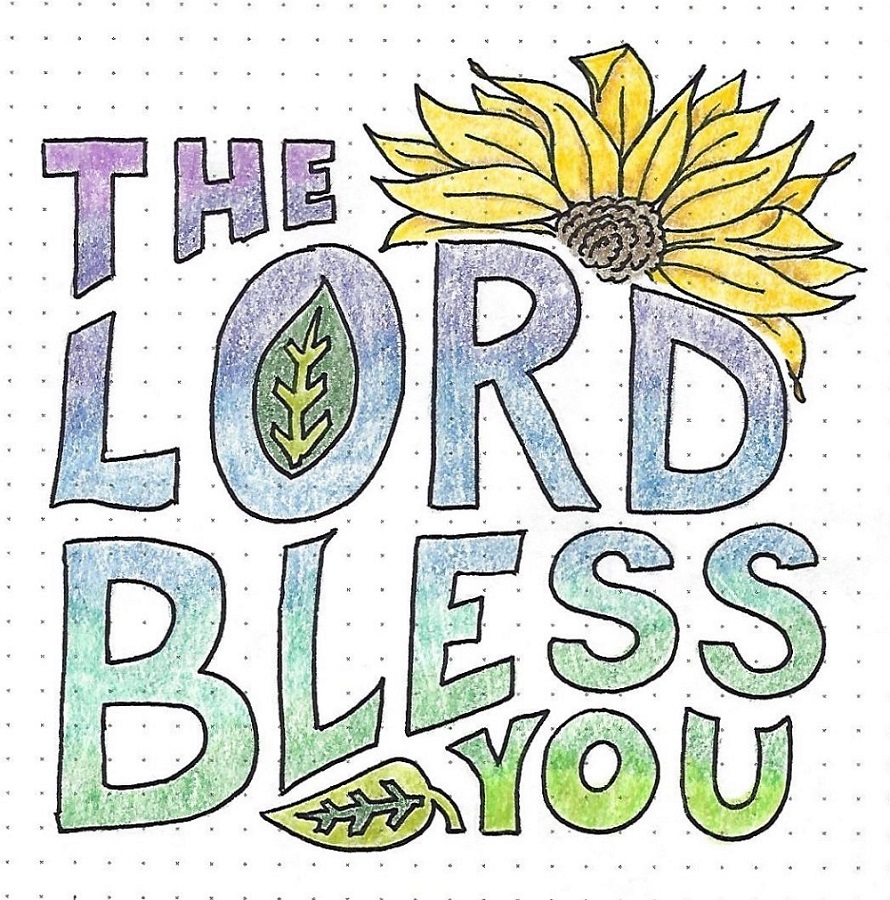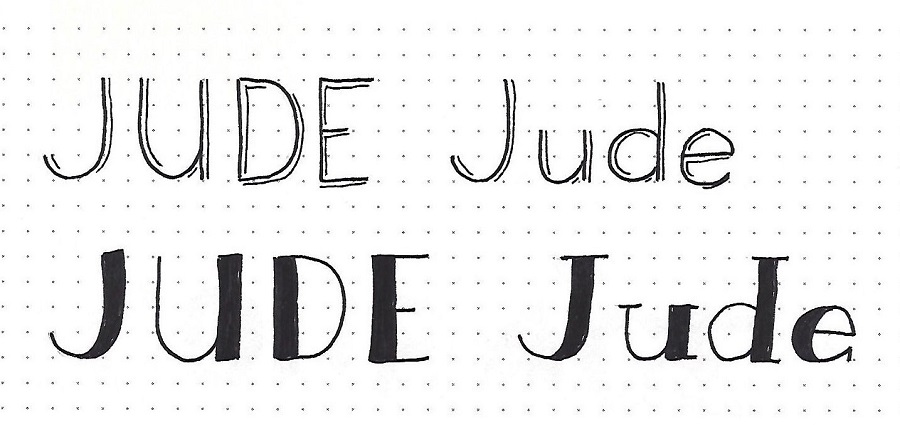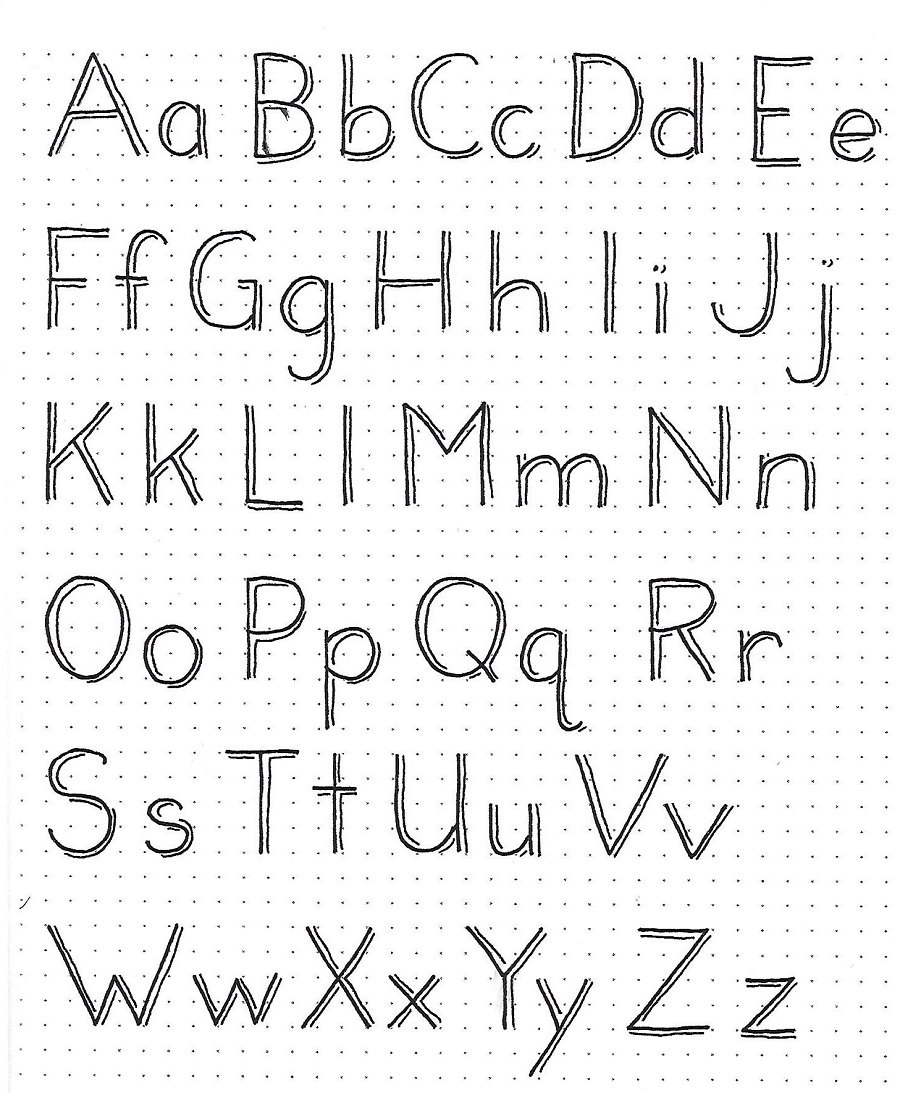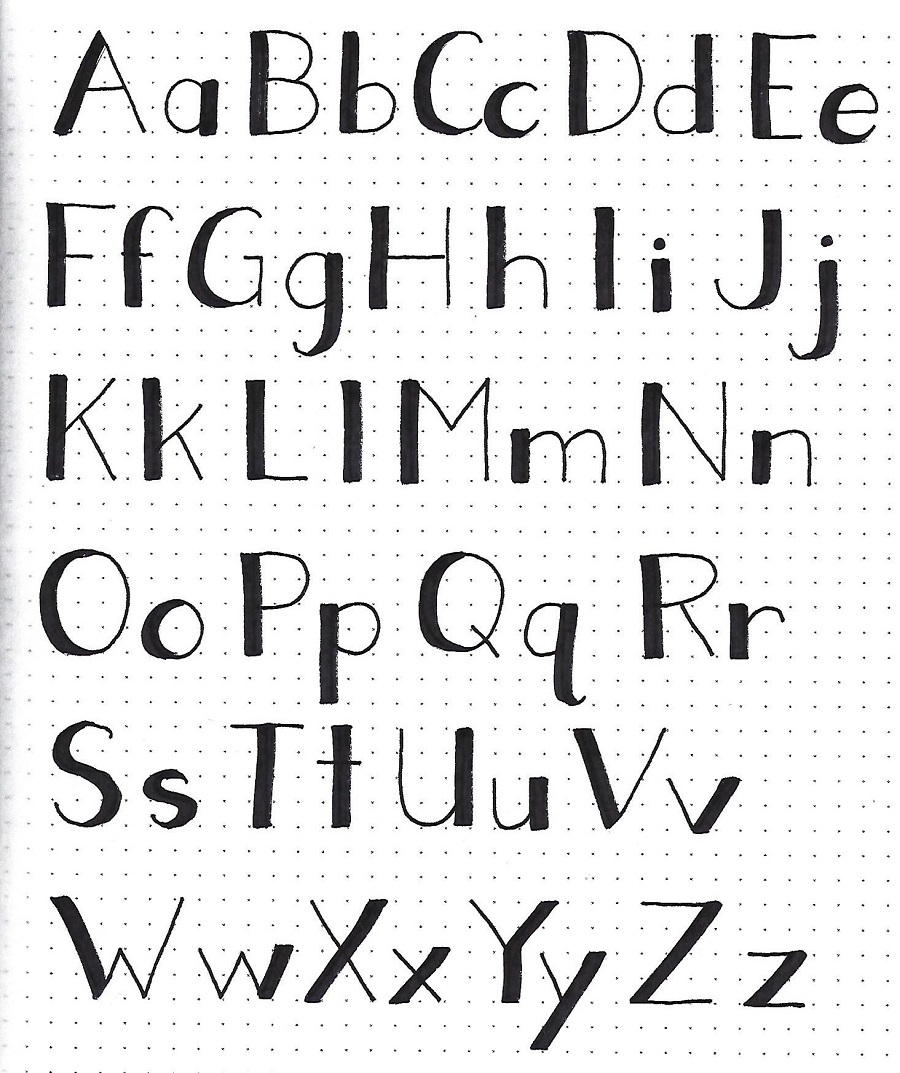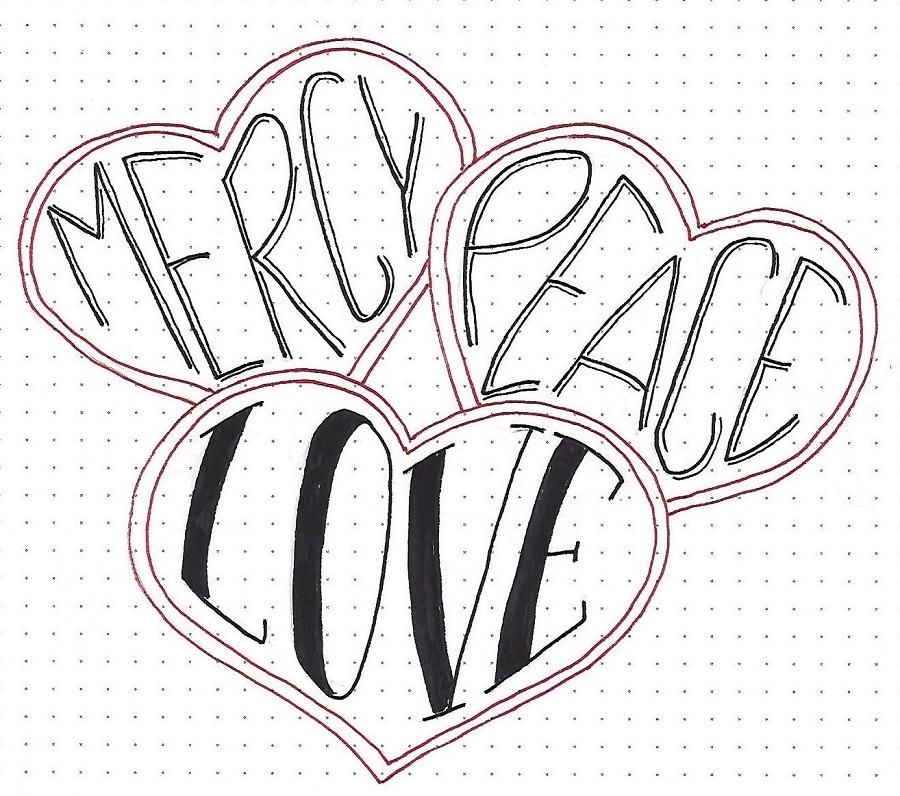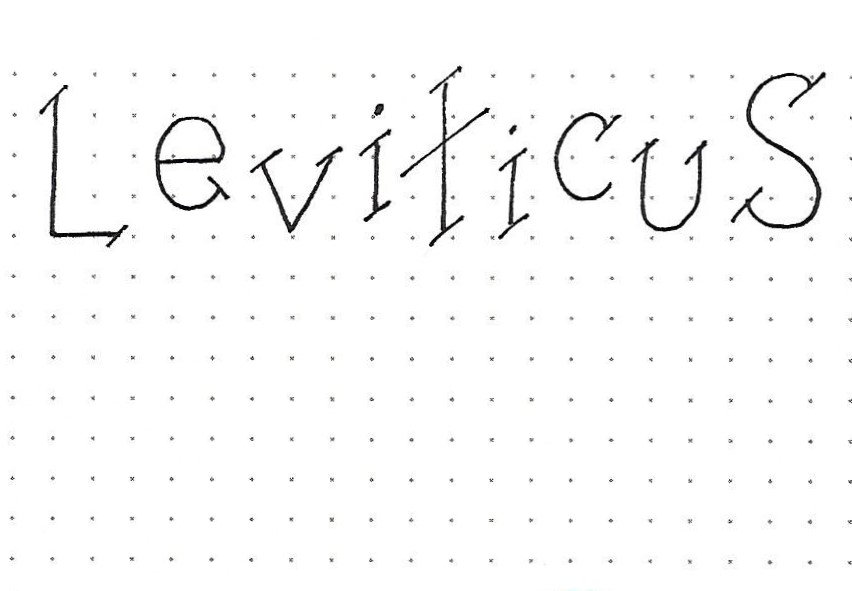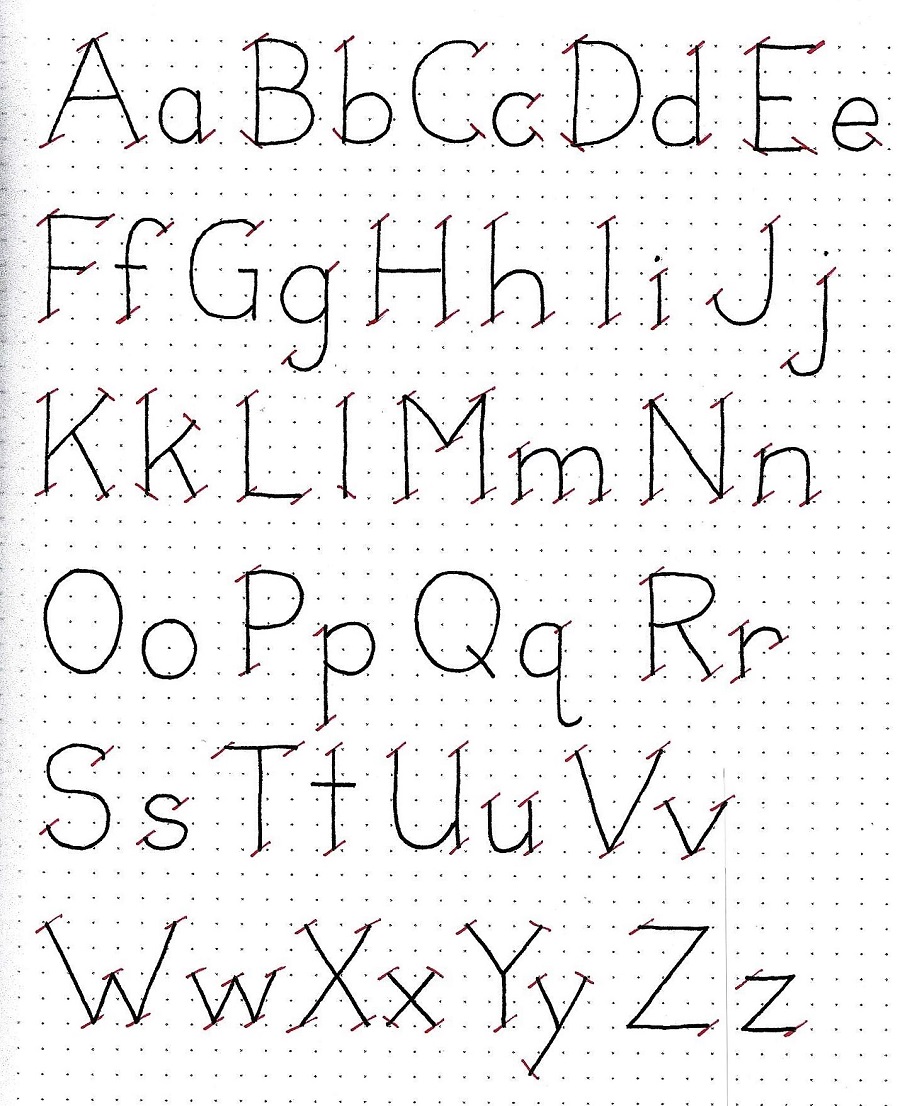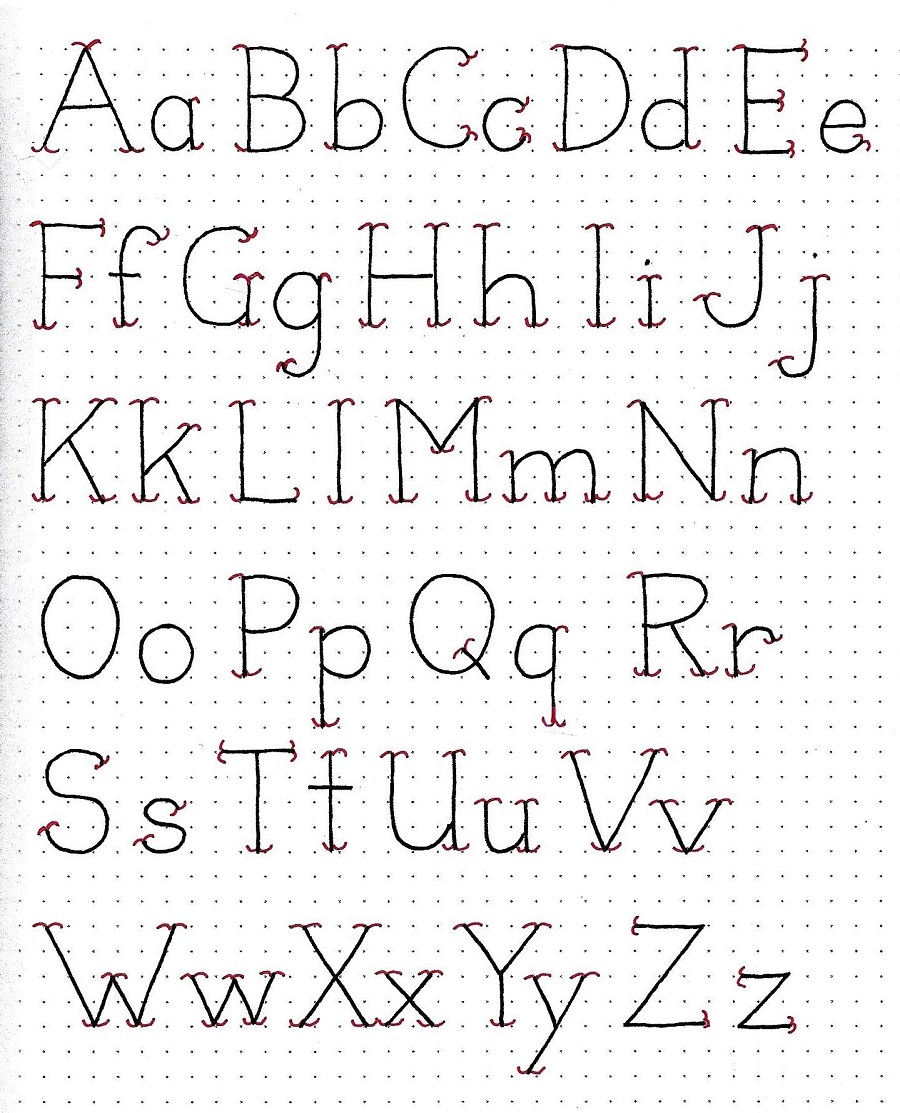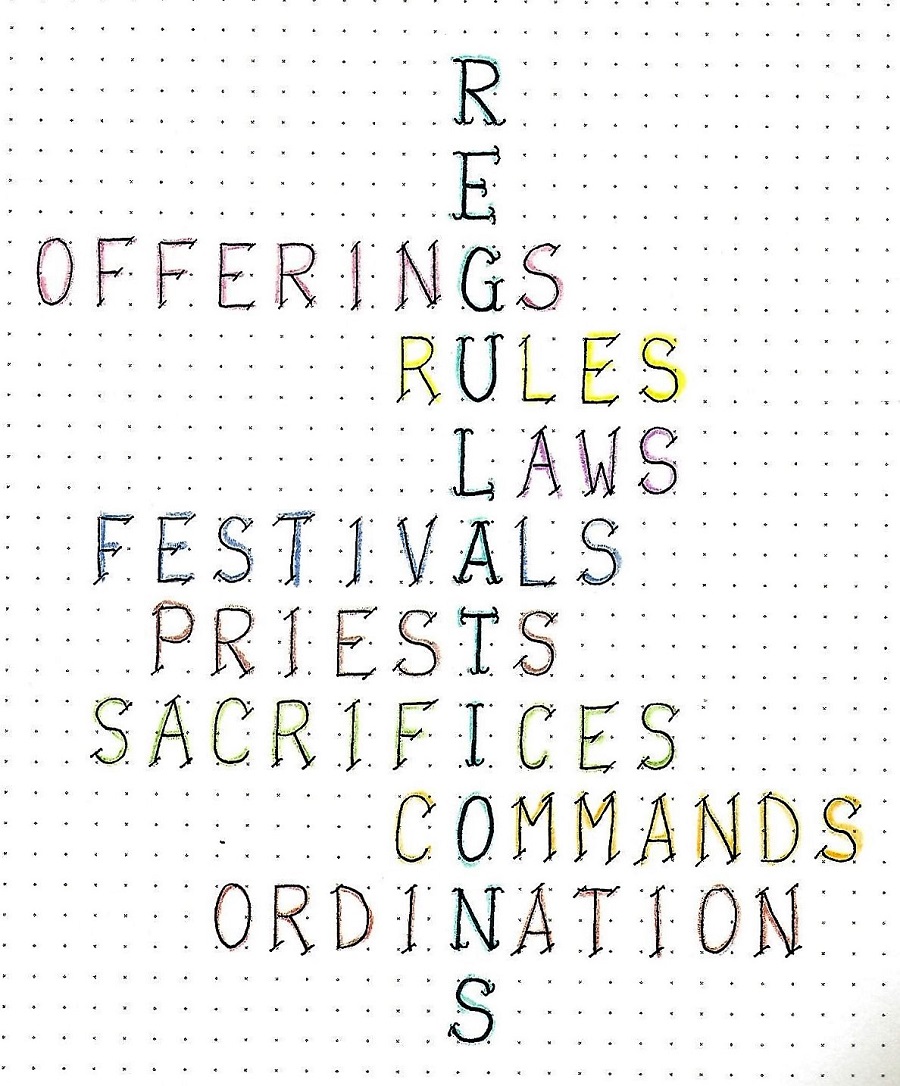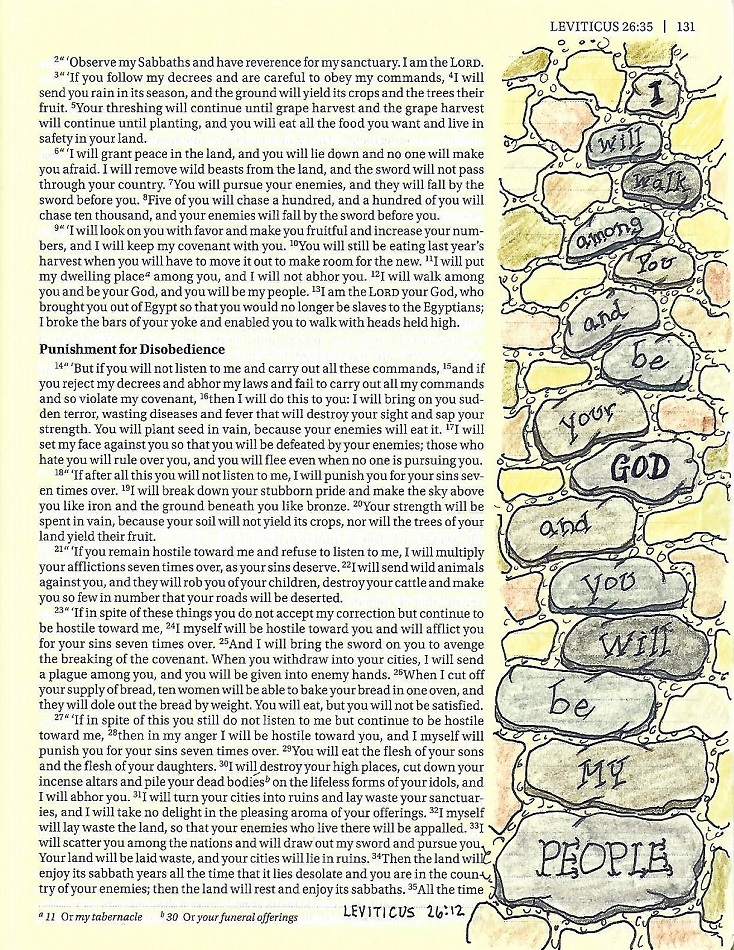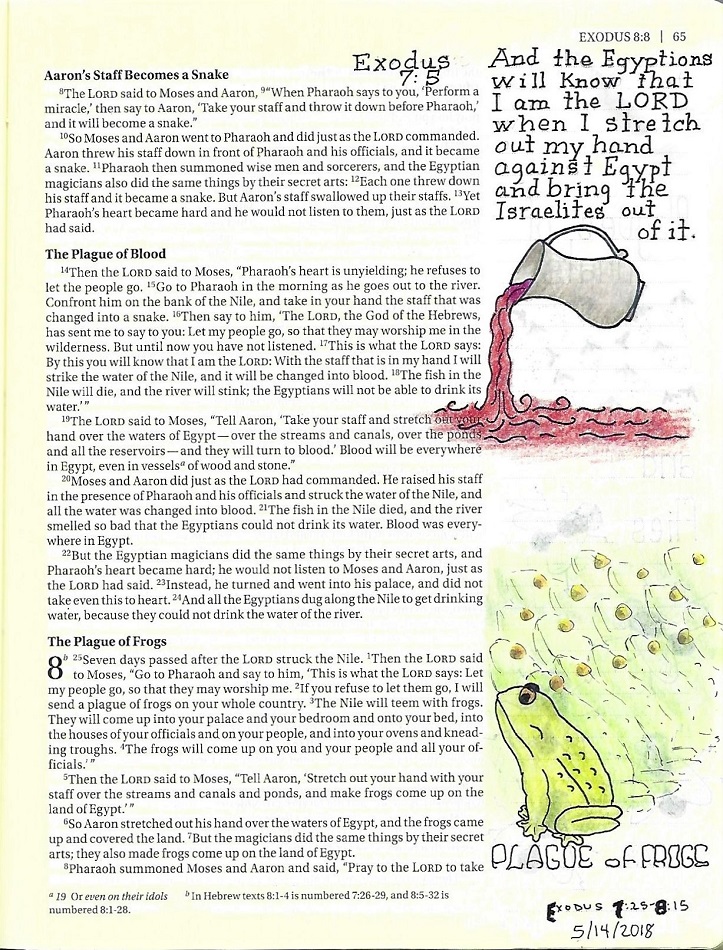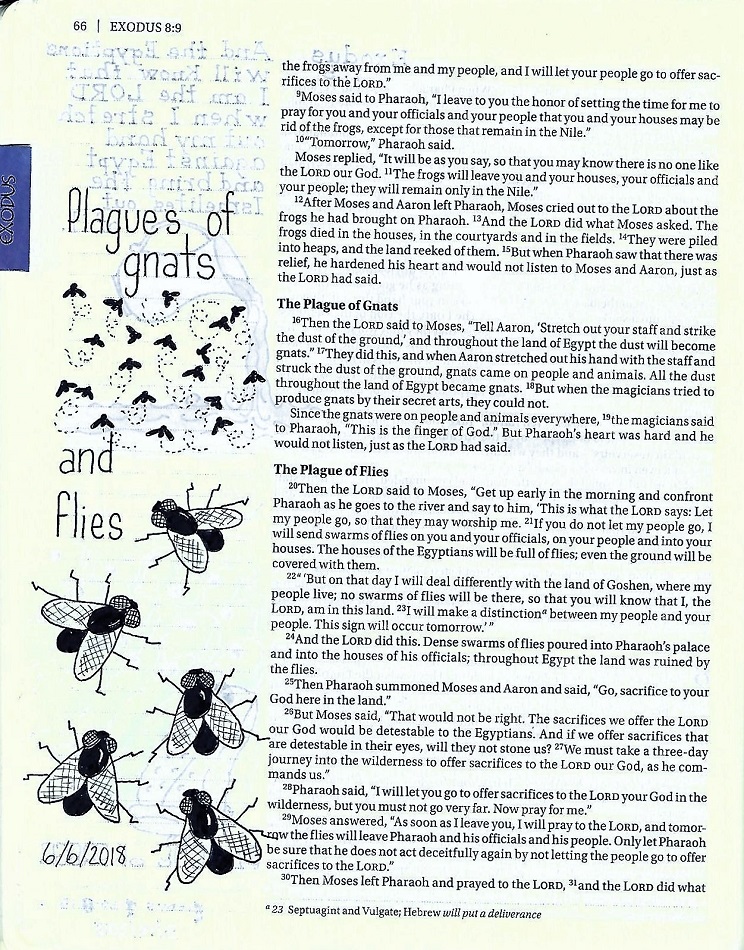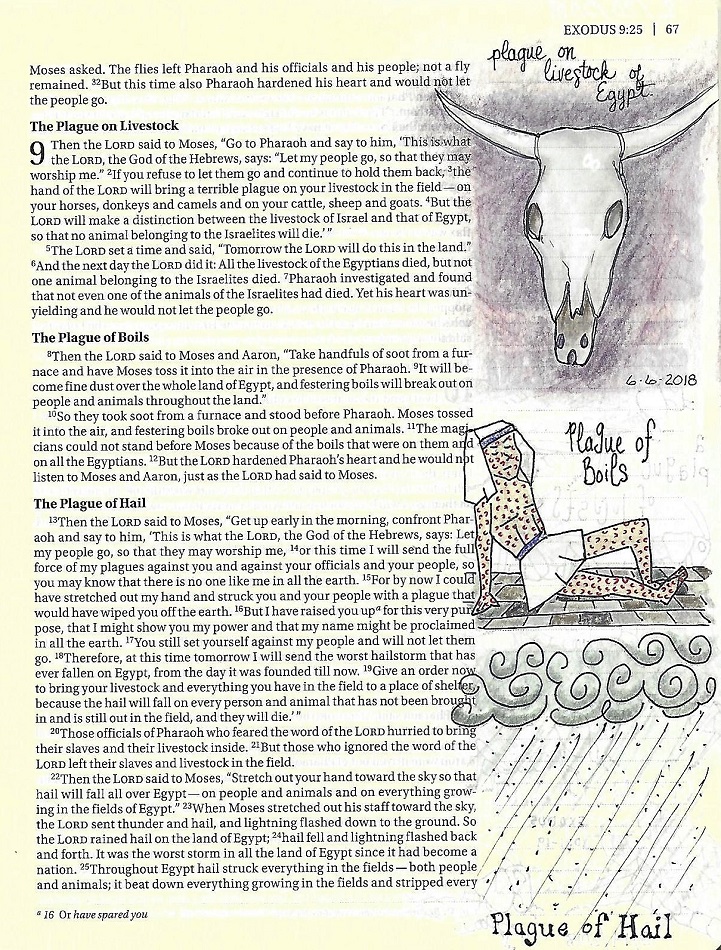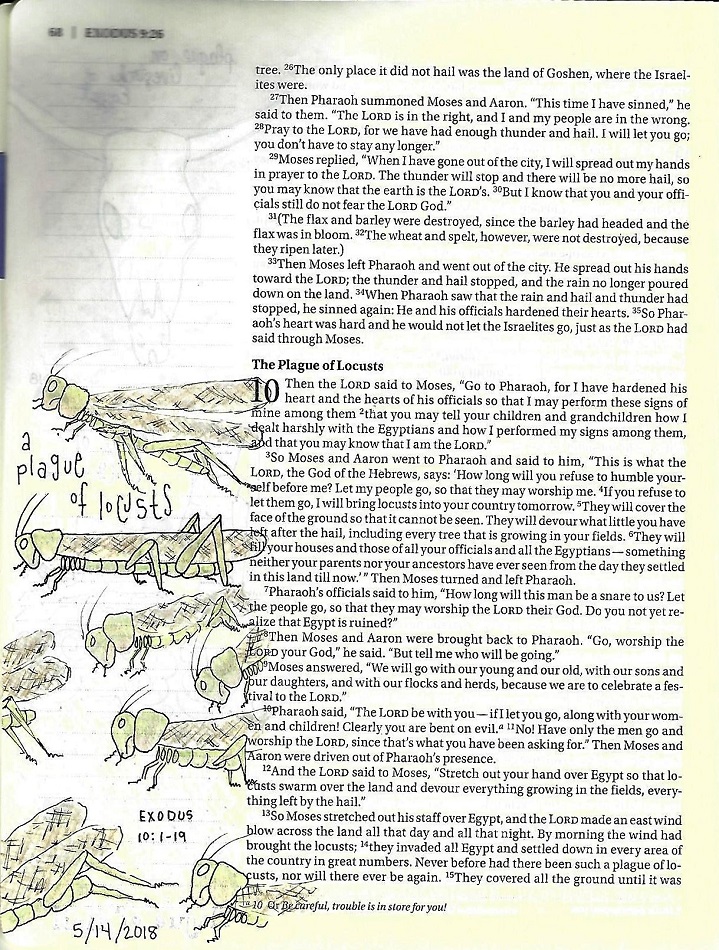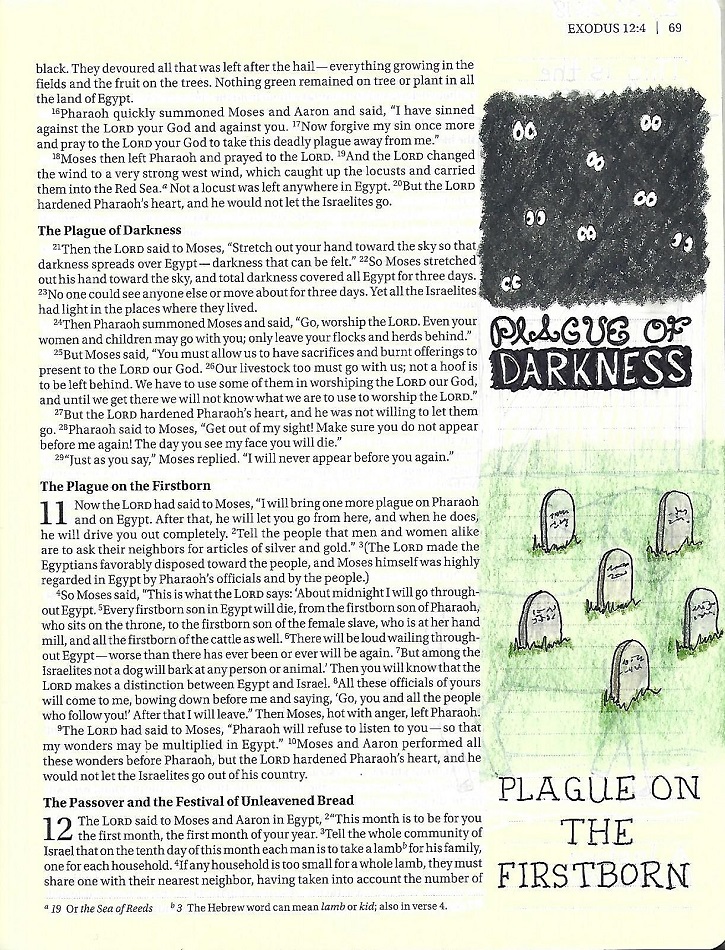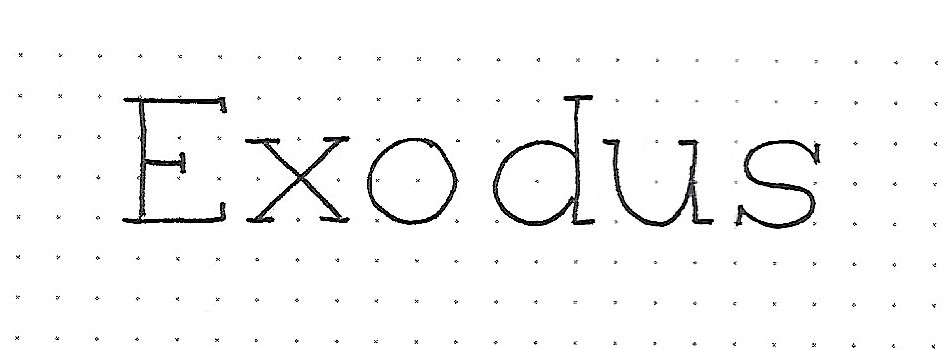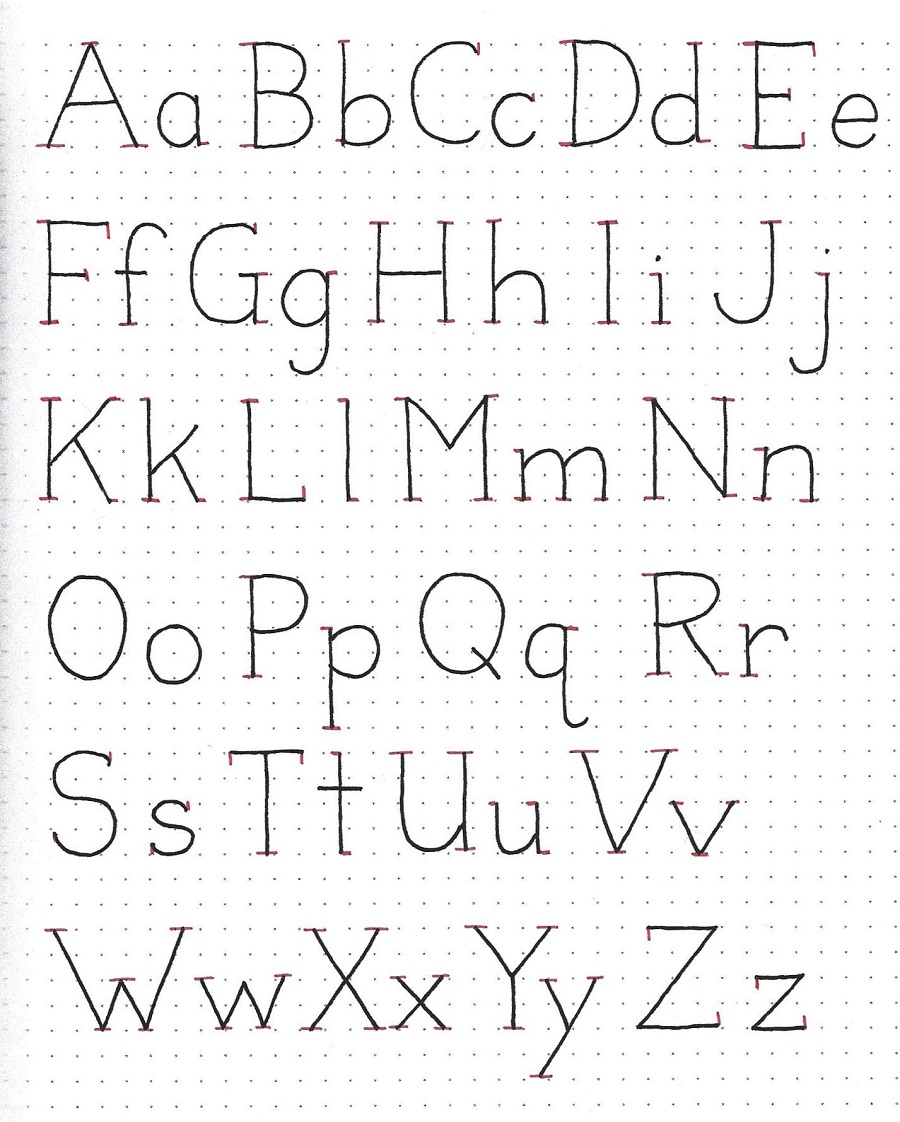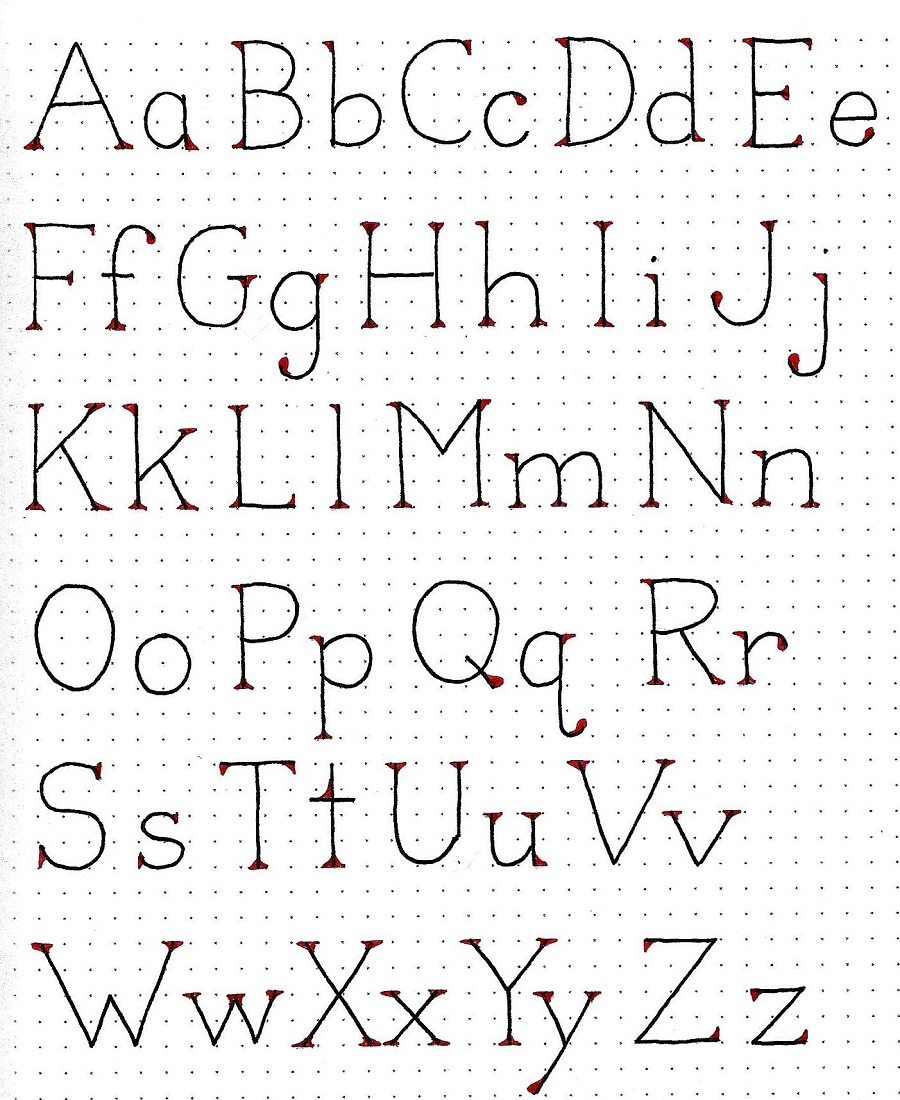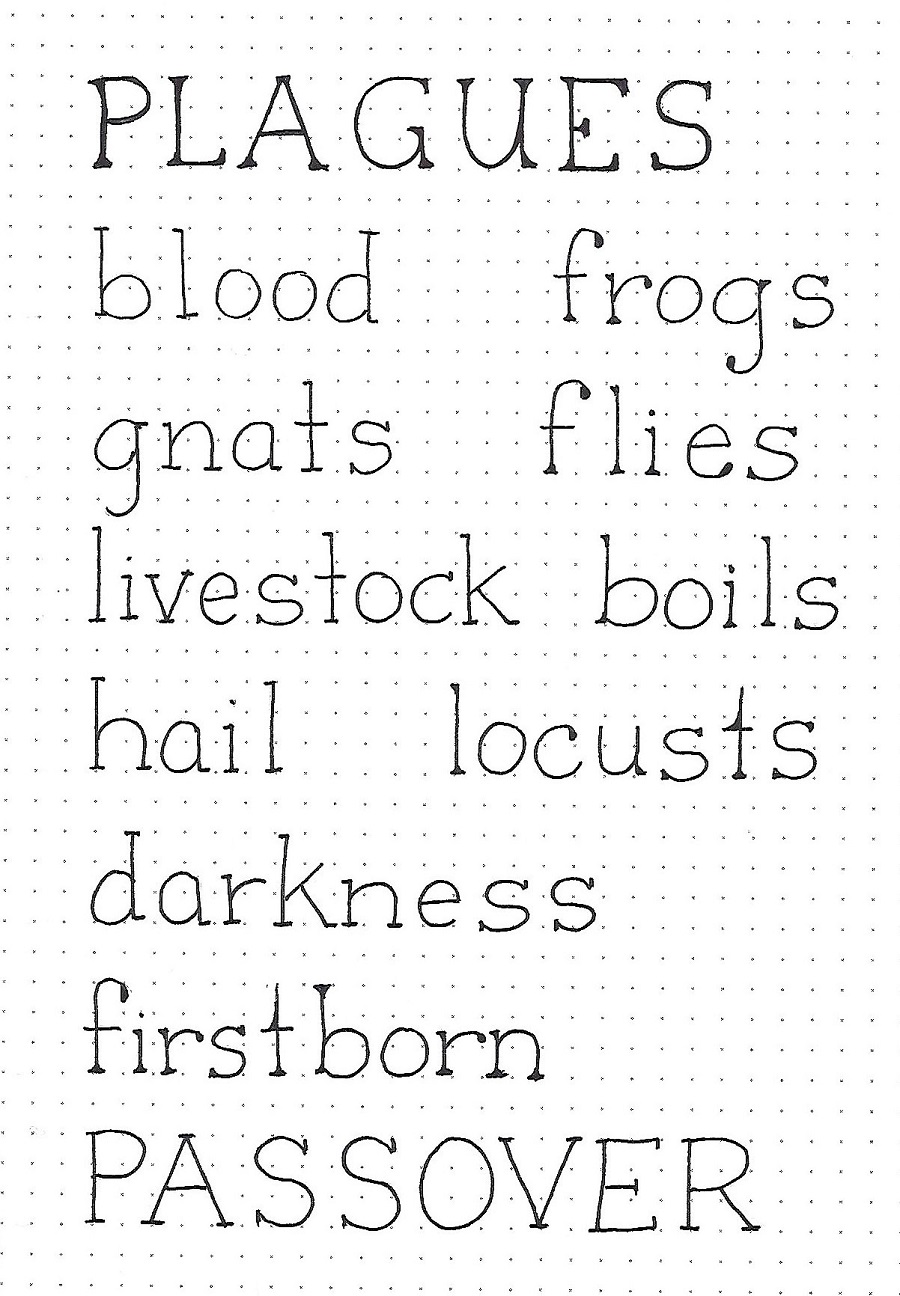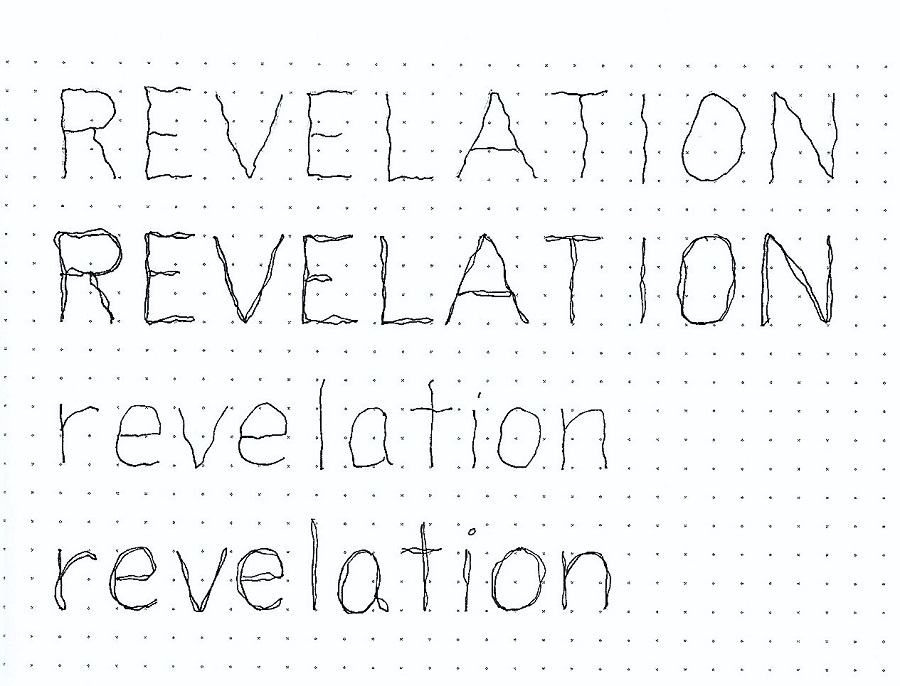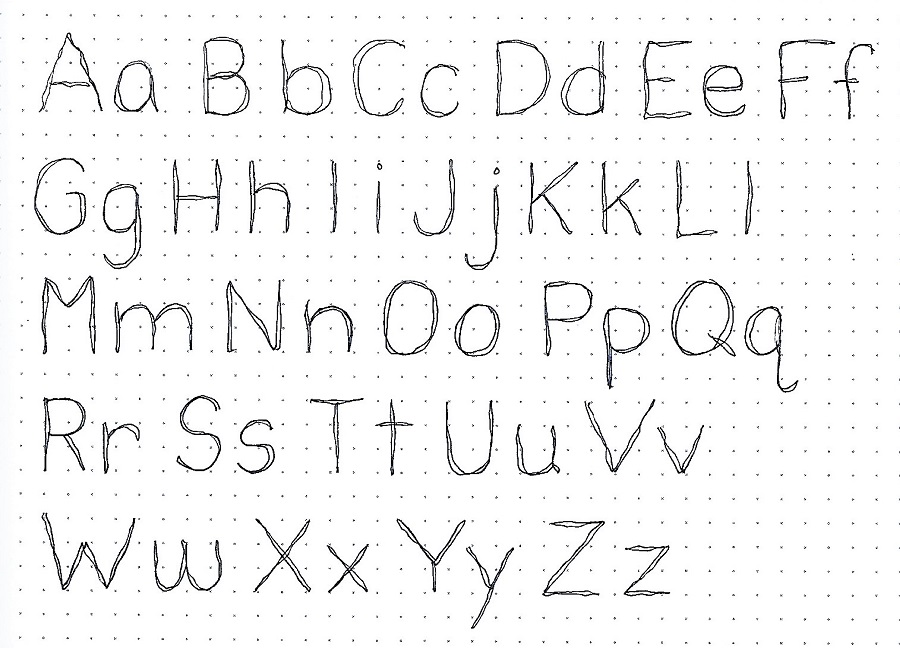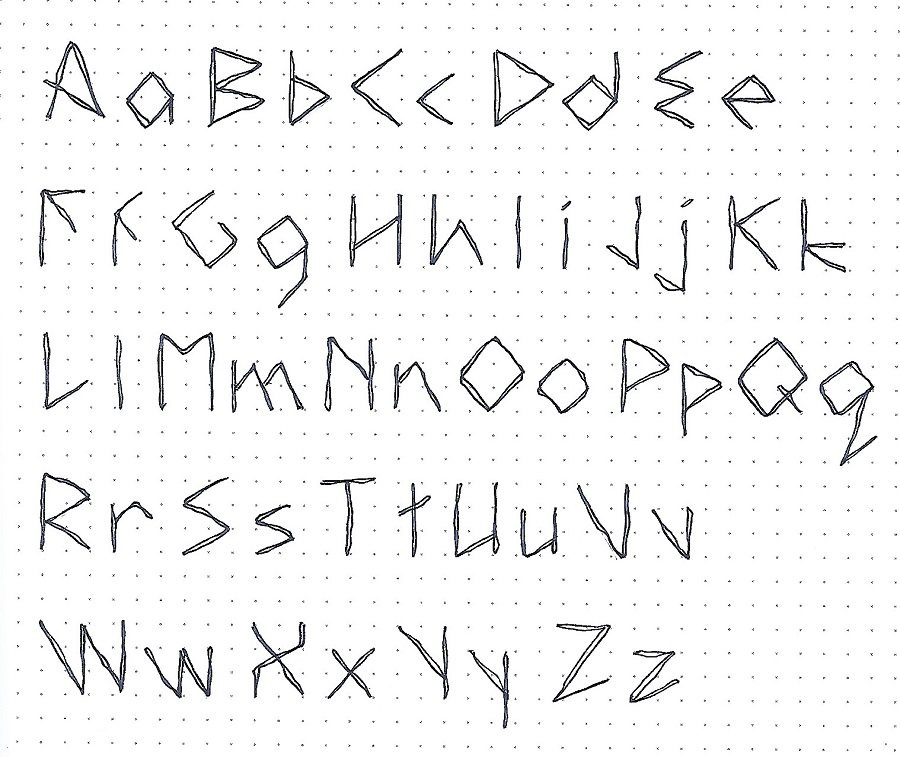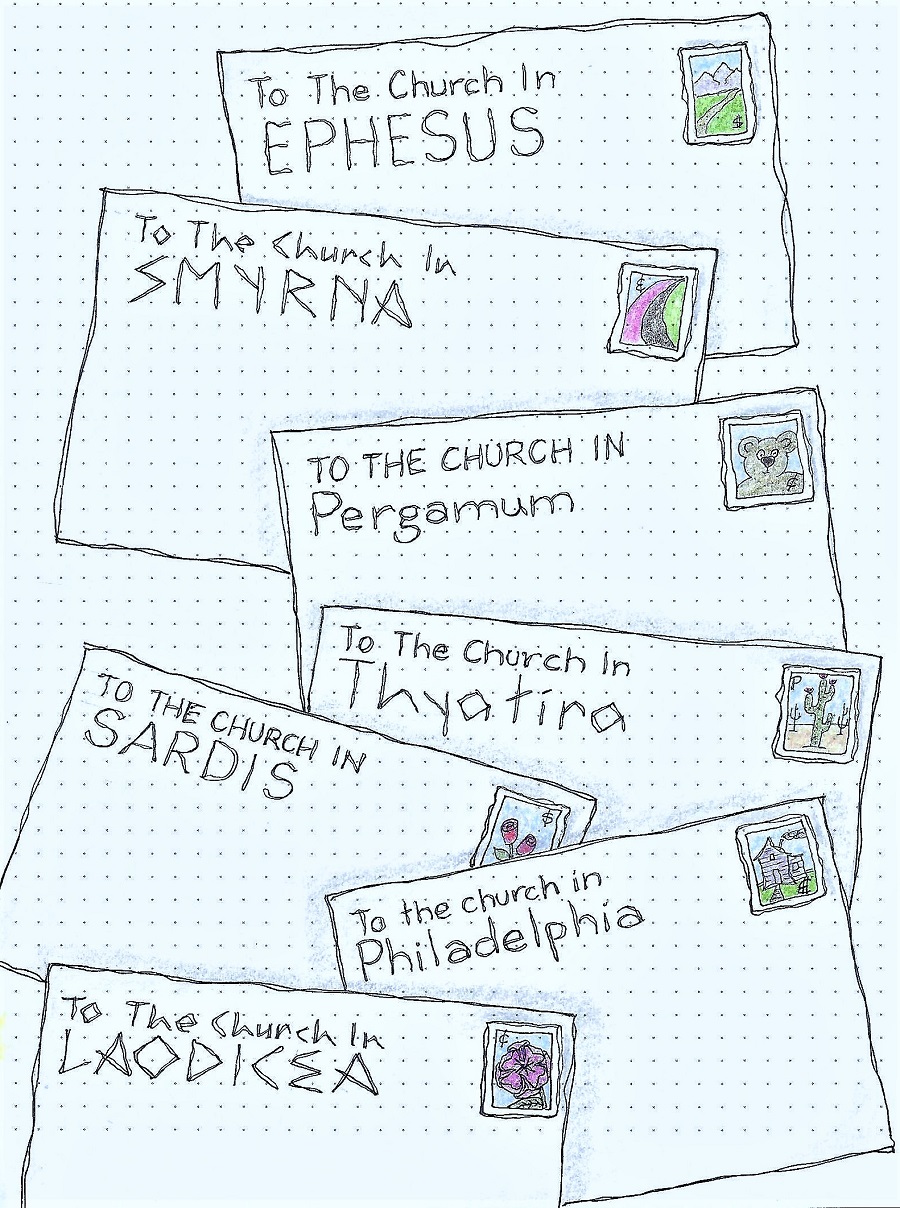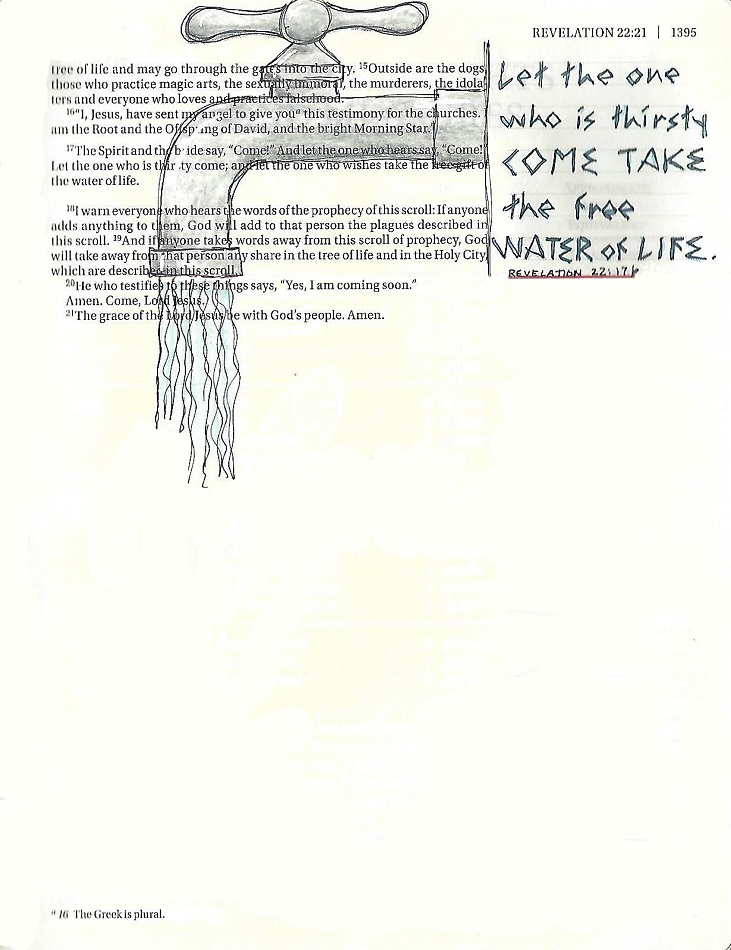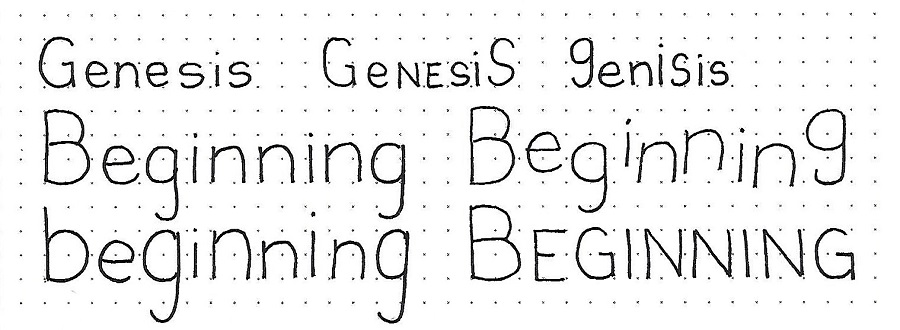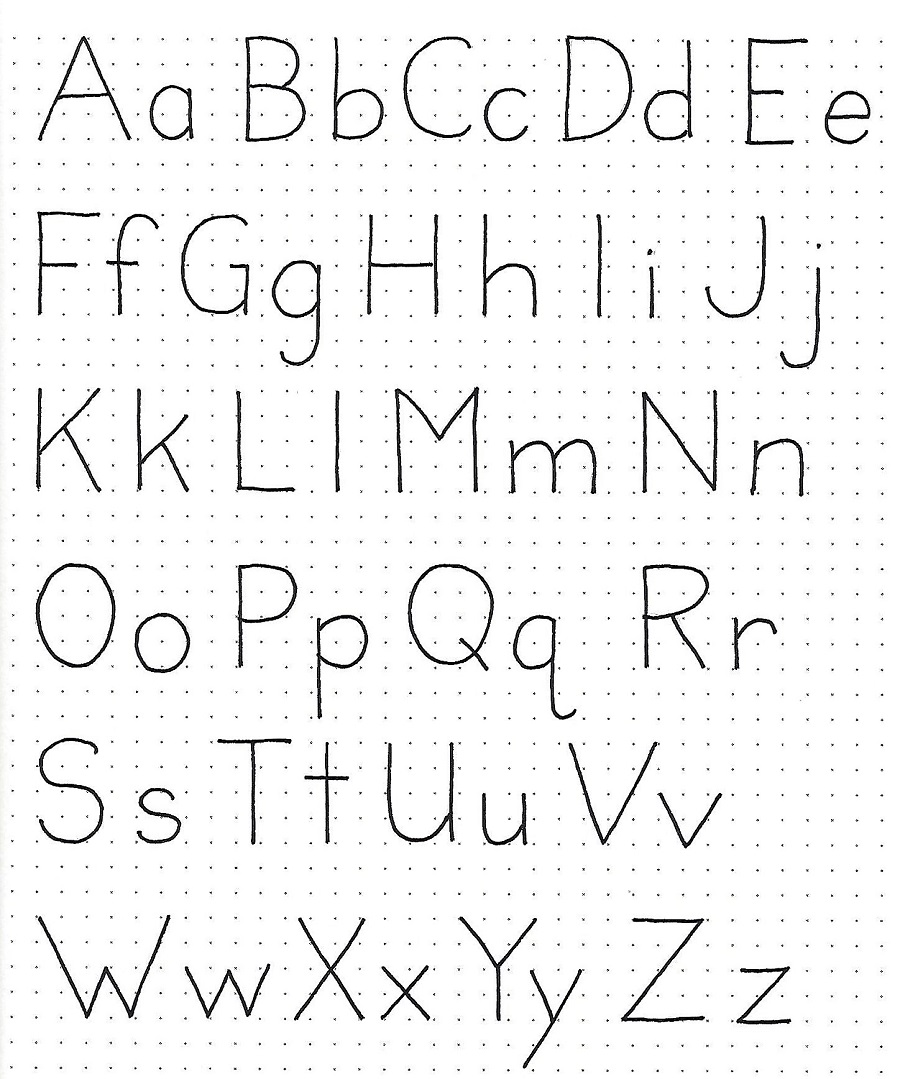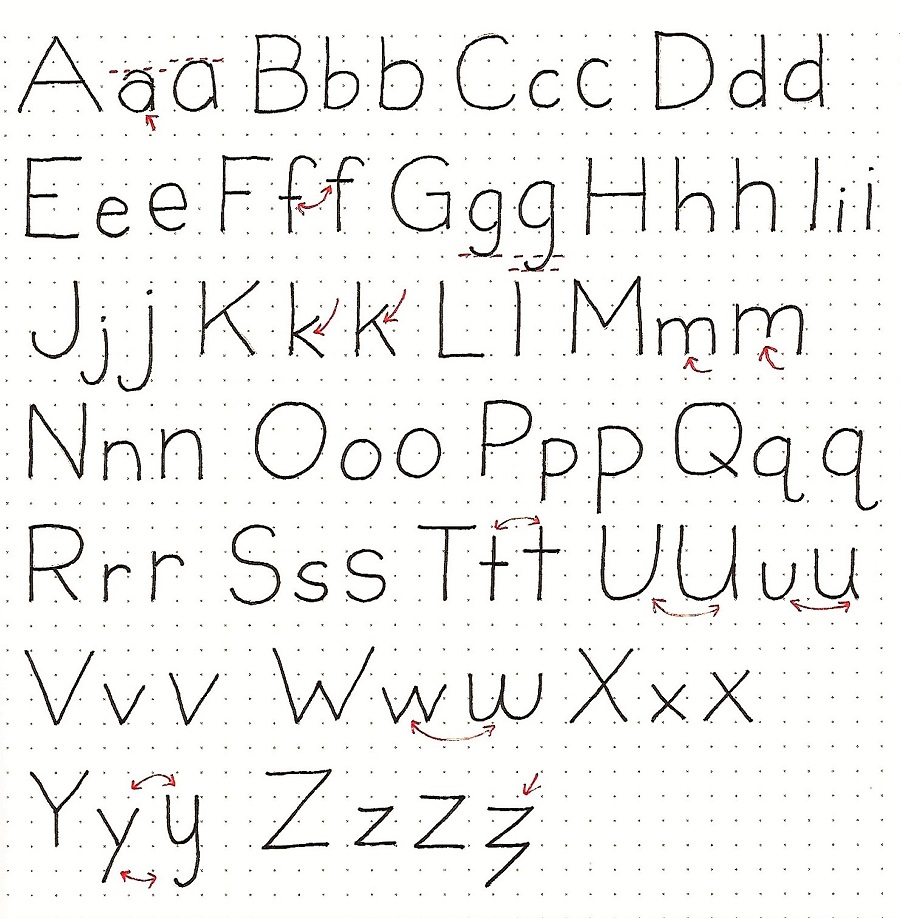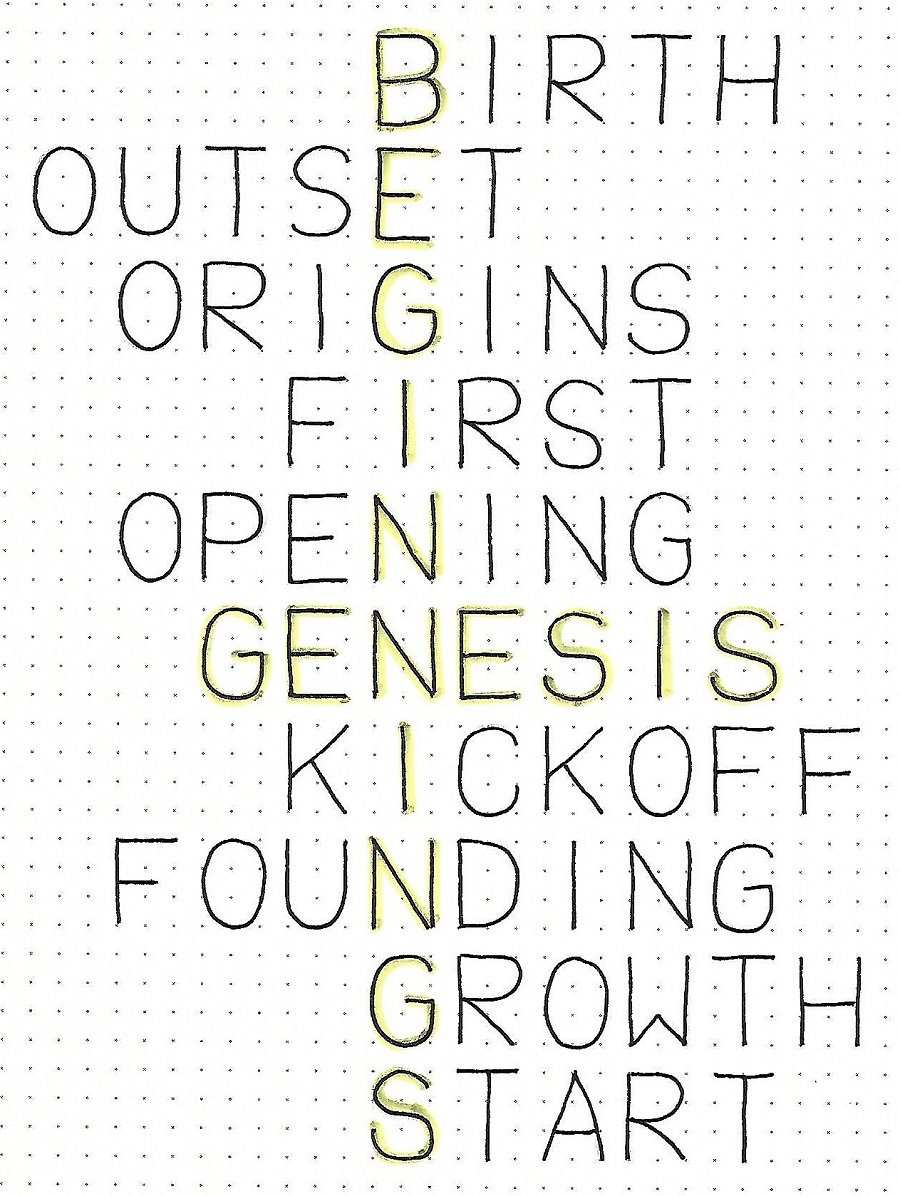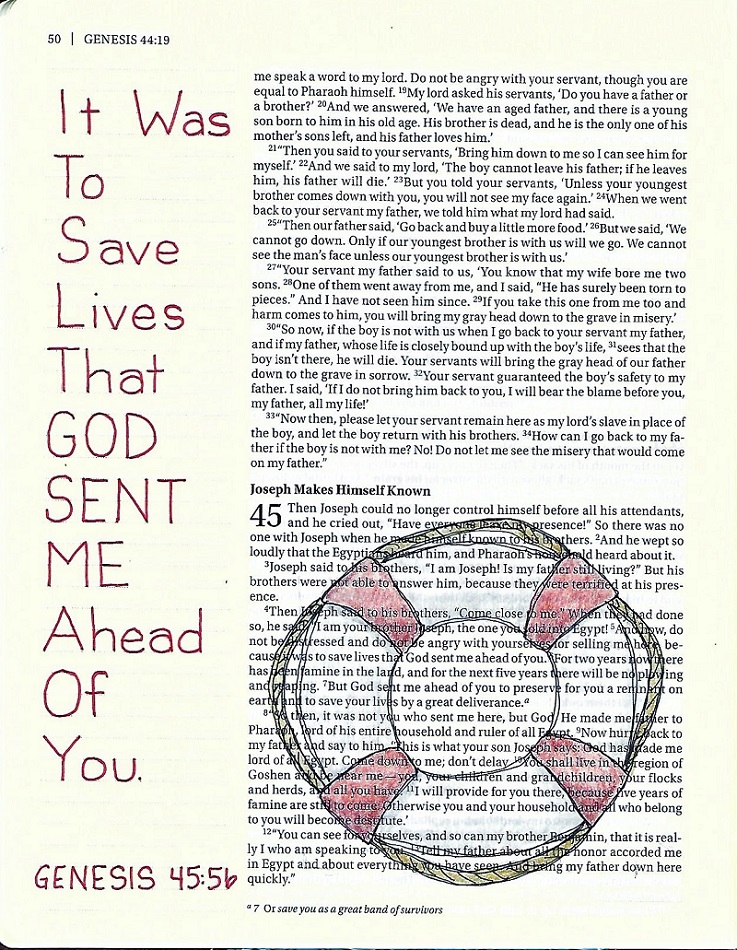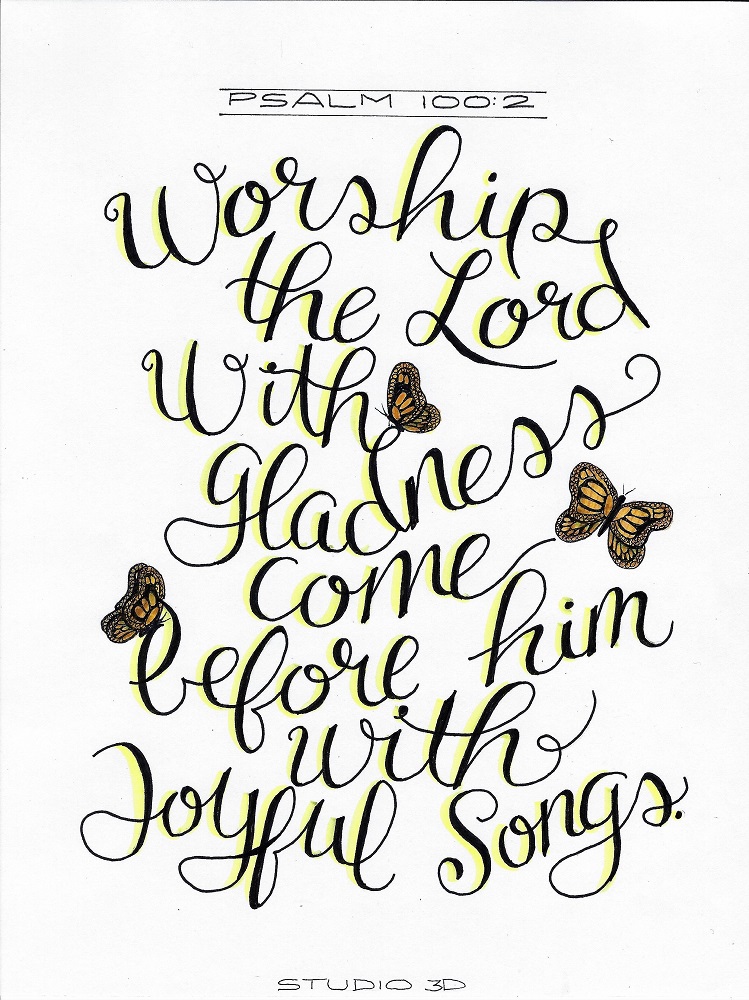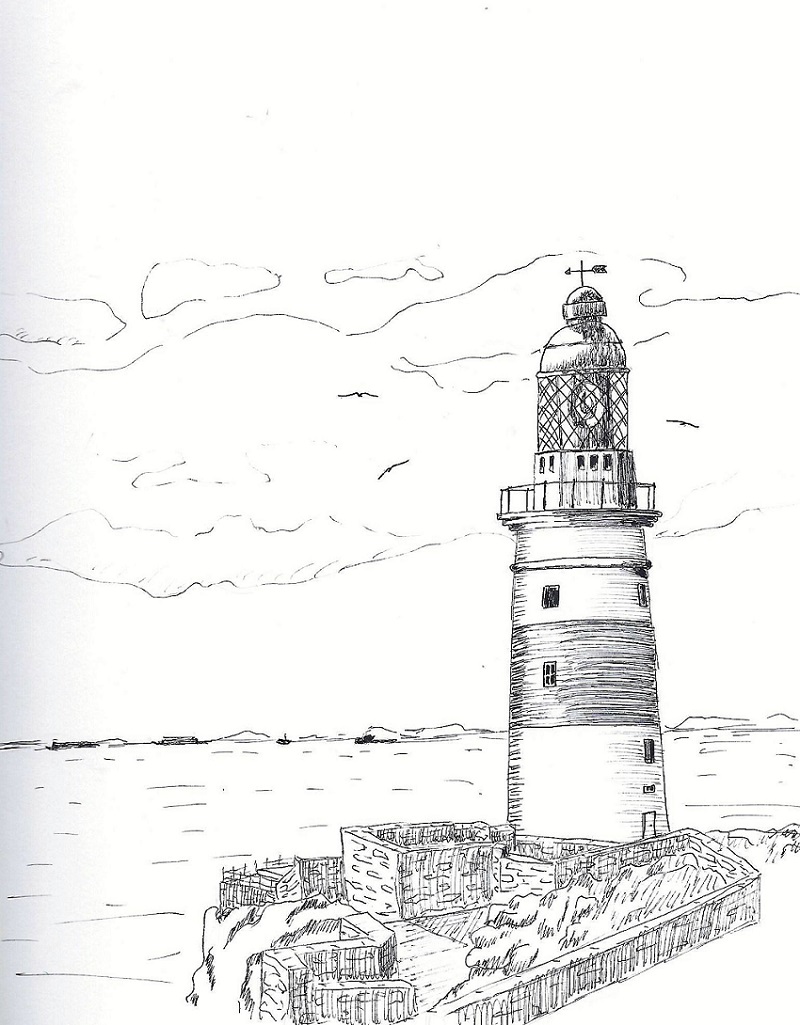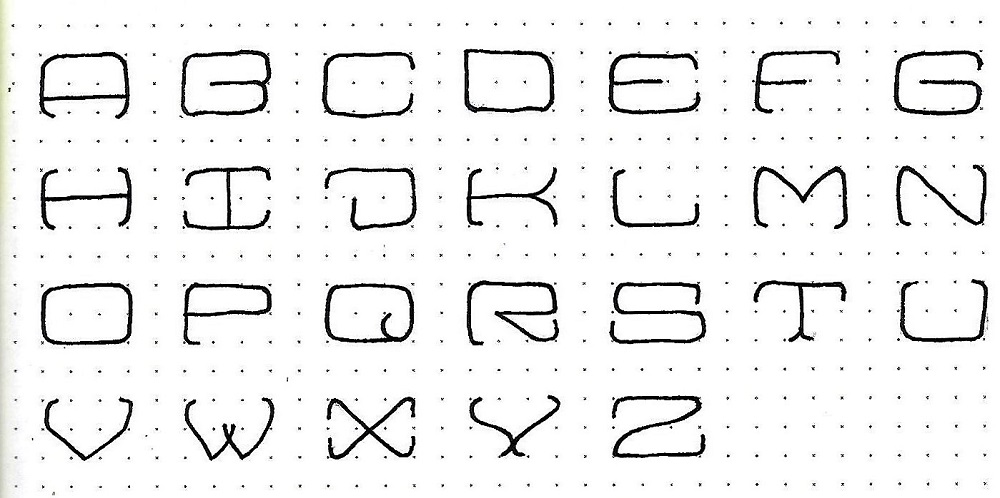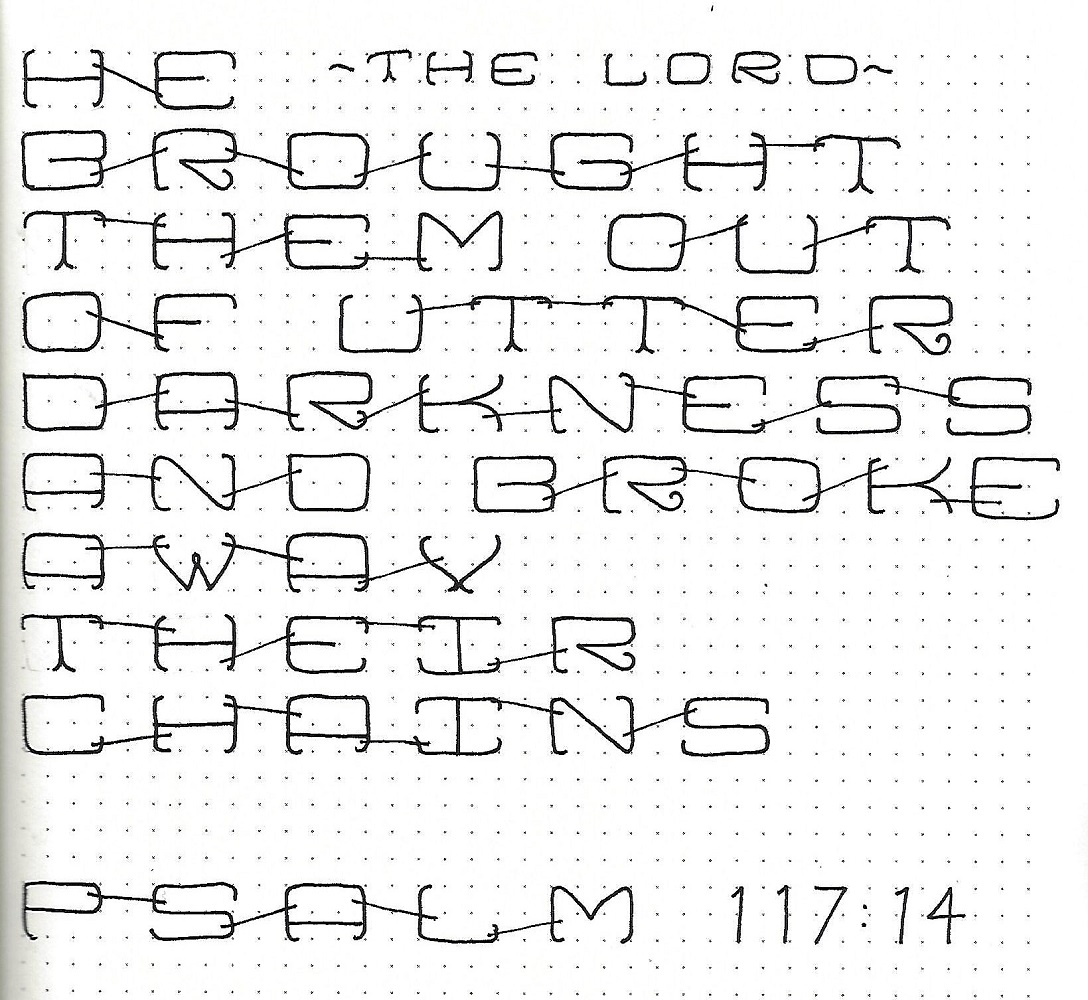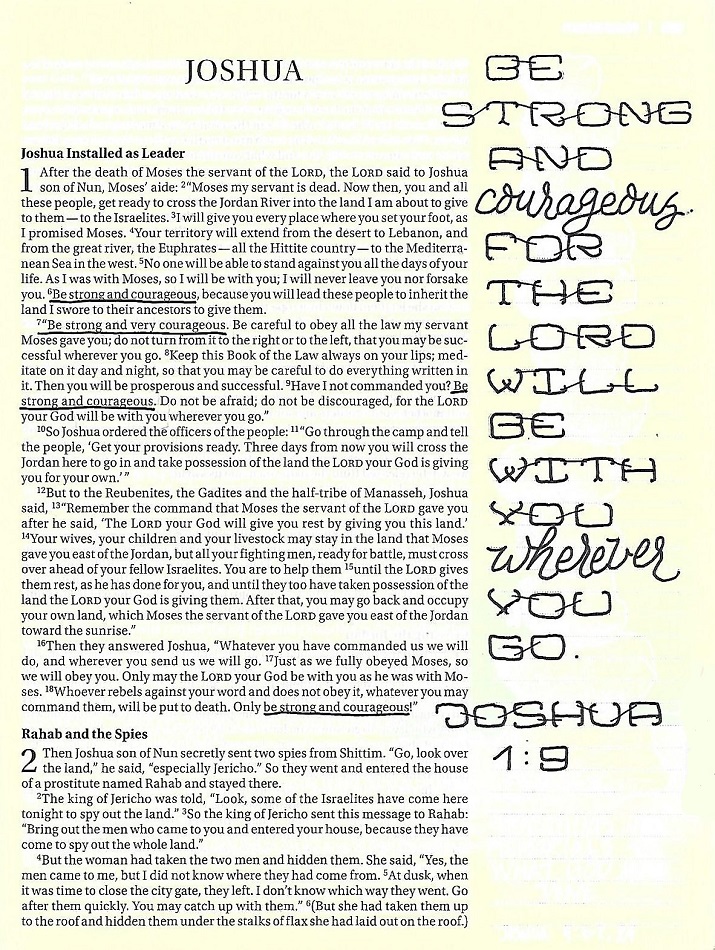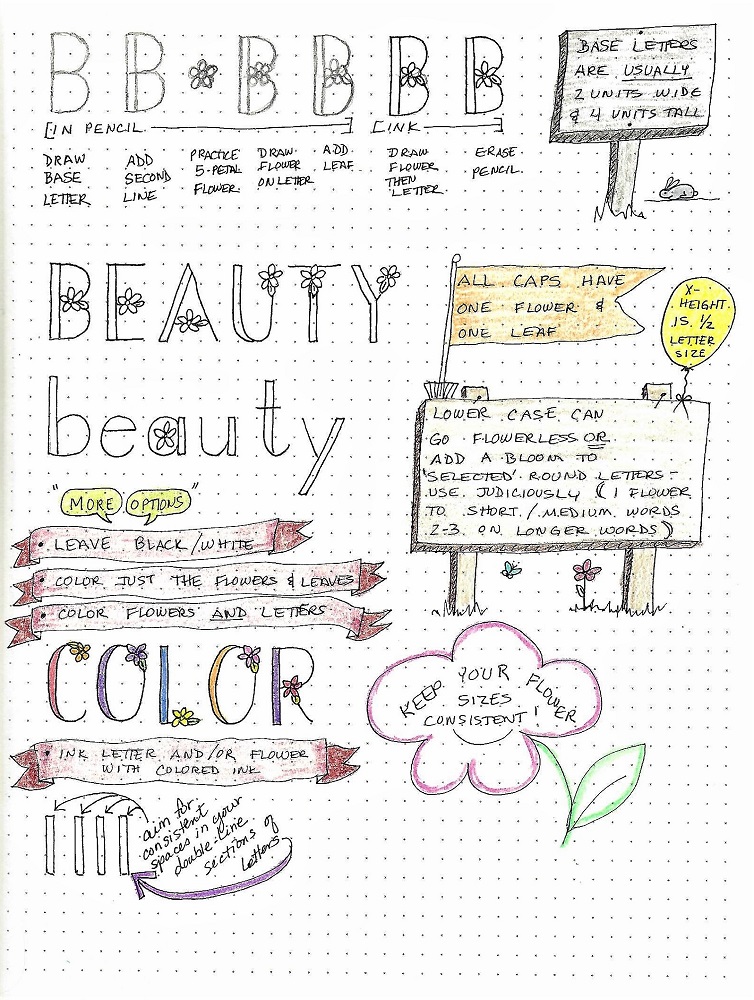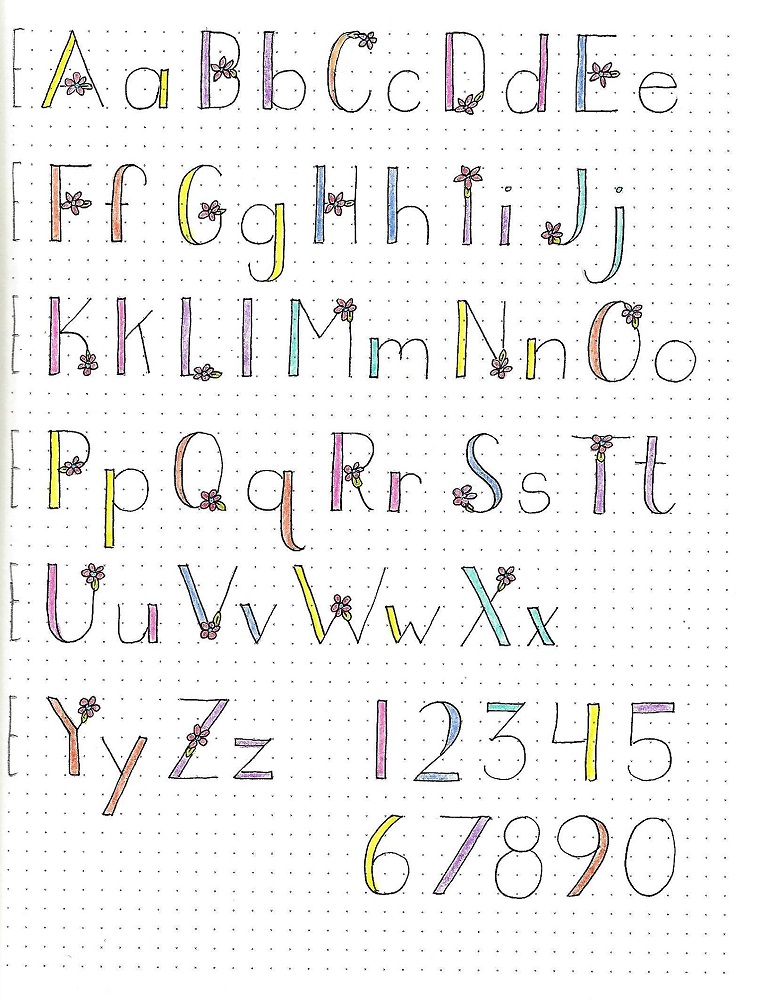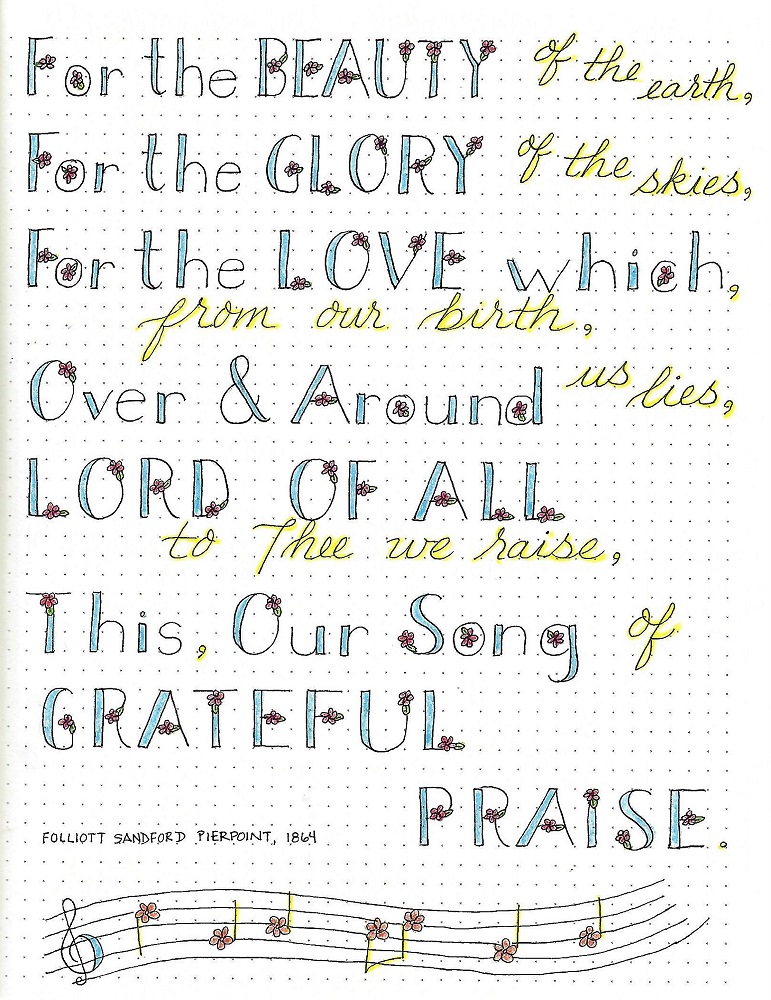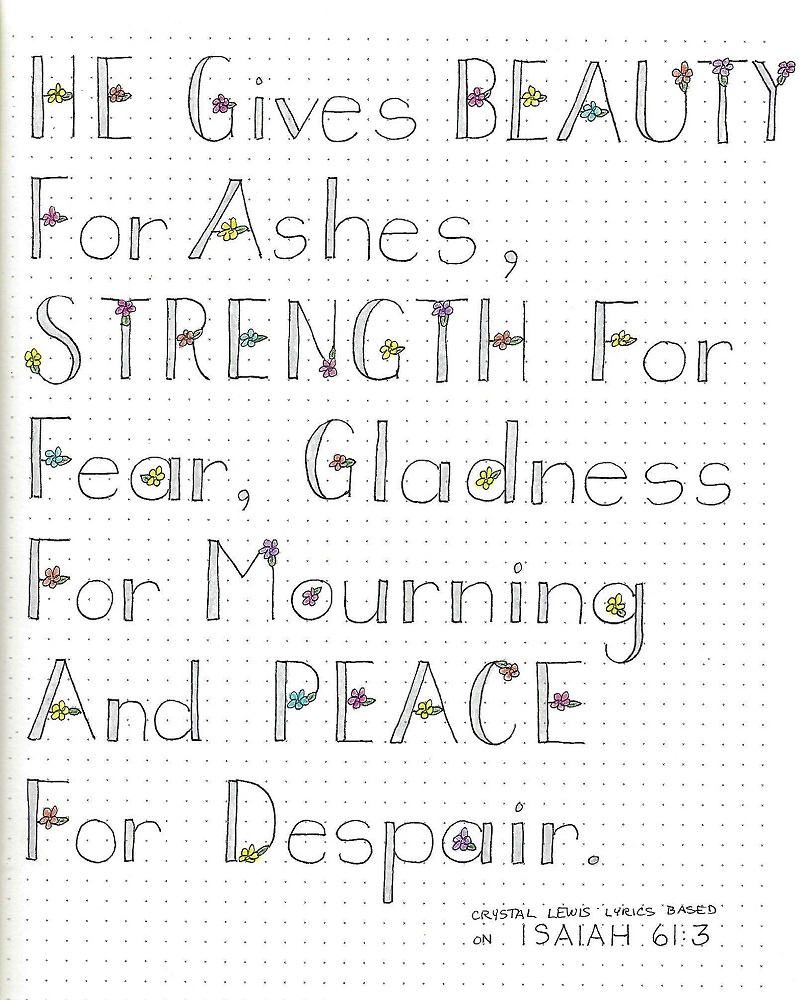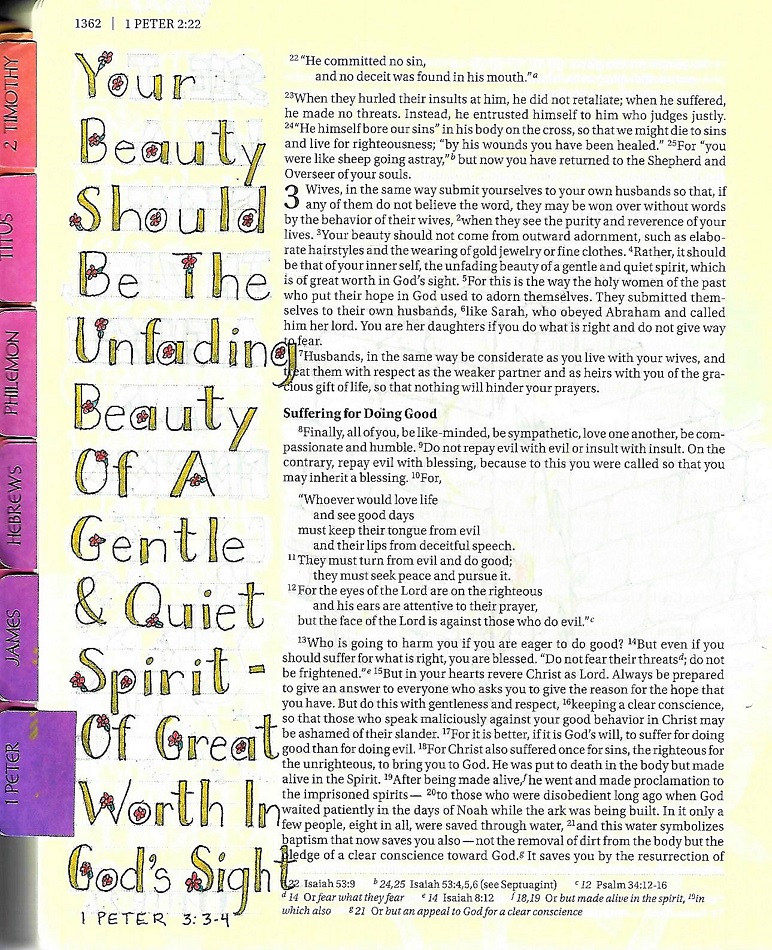Lettering in Joshua
Topic: Bible Journaling
It was time for another lettering lesson in the progressive series I started January 1. This week the focus was on the book of Joshua.
Here are the daily lessons:
JOSHUA: Day 1 – Block Lower Case – Intro
This week we are going to add to the block lettering in several ways. First up will be to create a lower-case alphabet. We’ll practice this process today using just the single word, ‘Joshua’.
In pencil, lightly draw out the word in a basic print as shown on the first line. Then draw an equal width on all sides of these lines. Ink the outline only and erase the pencil guides.
When I am using lower-case, I don’t make the elements as wide as when using all-caps. The lower-case letters are obviously smaller and have tighter internal spaces. Making the elements narrower gives some breathing room on the insides of the letters.
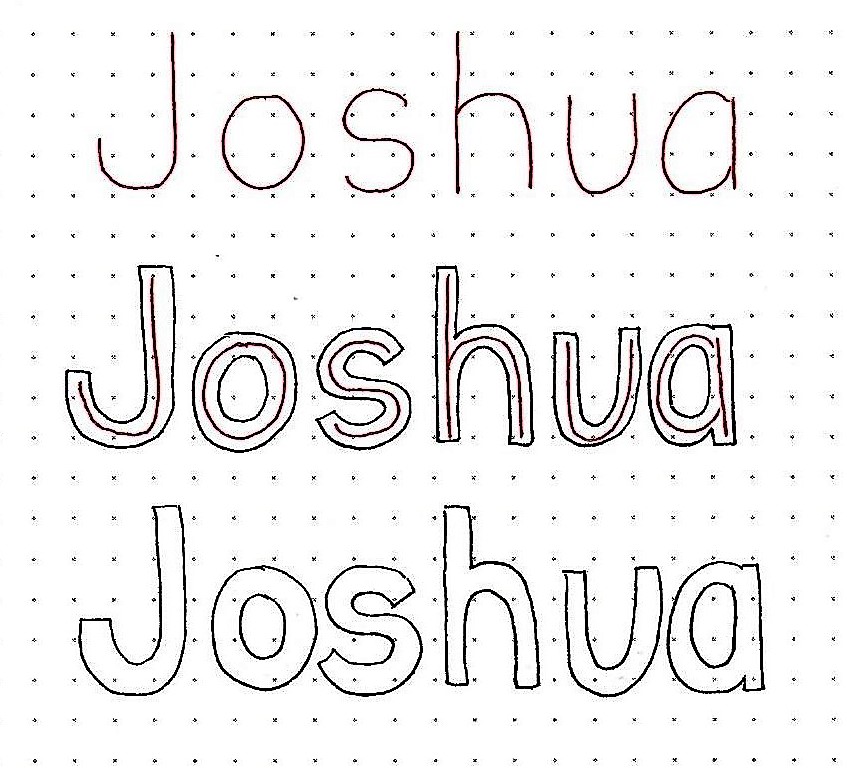
JOSHUA: Day 2 – Block Letters in Dual Case – Alphabet
Use the technique introduced yesterday to create a full alphabet for the upper- and lower-case block letters. The final alphabet will be personal to you because it is based on your initial writing of the basic round print letters.
What we are doing by using this method is helping you to develop your own personal style. You’ll note that my alphabet is not perfectly formed. This is okay with me because it is just a reminder sheet on how to construct the letters. I am not trying to match an ‘ideal’.
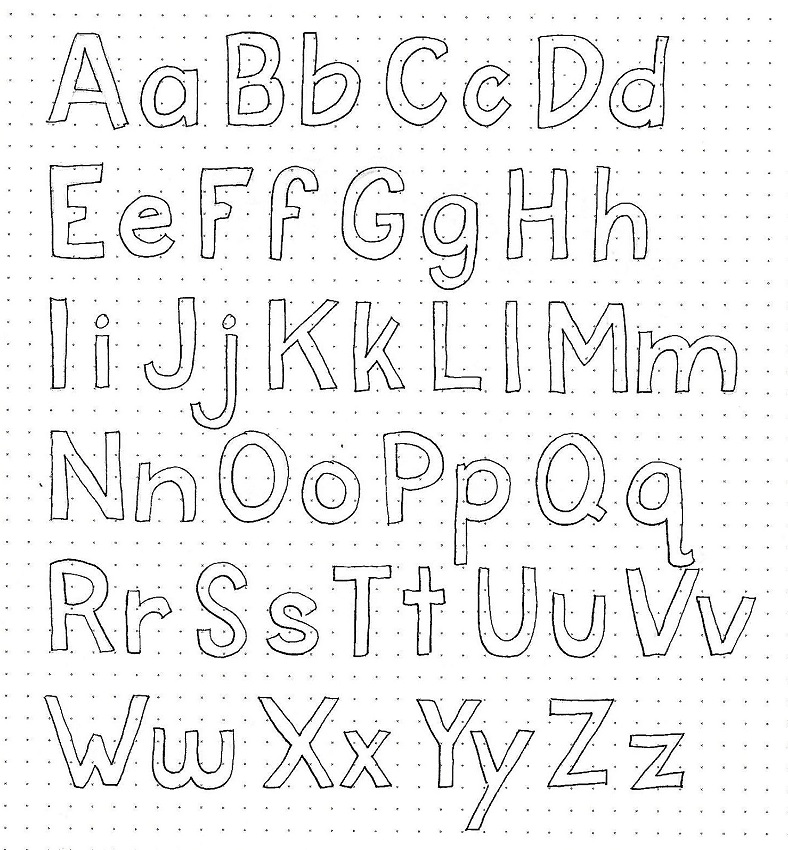
JOSHUA: Day 3 – Color Fills – Exploration
It’s time to play with color! I love this part of the process. Today we are going to write up another sample page of block letters (or you can make a photocopy of an alphabet you’ve already done) and experiment with a variety of color options. I did all of my samples in colored pencil.
1) 1- Down the left side practice blending colors on your letters. Although you could do these letters with any two colors you wished, I did mine in the rainbow – blending two colors on each line: red-orange, orange-yellow, yellow-green, green-blue, blue-indigo, indigo-violet.
2) 2- Use two tones of the same color to make the letters dimensional. Darker shade goes on the bottom and left of elements and is blended with lighter shade covering the remainder of the letter.
3) 3- Draw a wavy line right through the word. Color the letters above the line and the background below the line.
4) 4- Choose two contrasting colors to apply dots on every other letter. My caps have turquoise dots on purple letters and the lower-case have purple dots on turquoise letters.
5) 5- Six shades of the same gray were used to color successive letters.
6) 6- Alternating solids were used to color these letters.
7) 7- Dark colors (red and orange) were used to outline the letters and a bright (yellow) used to fill in.
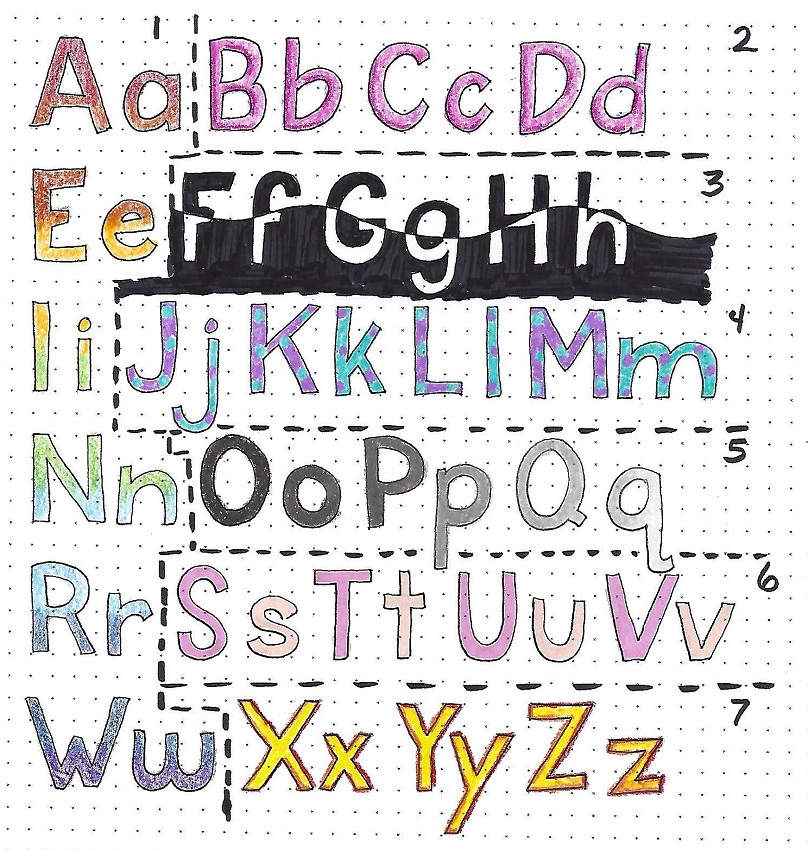
JOSHUA: Day 4a – Your Own Alphabet – Design
Things are about to get really exciting! It is time to cut loose and design your own alphabet.
I’m going to have you start with the basic block alphabet we learned this week. But on a new piece of paper, use your pencil to sketch lines that extend and expand in exciting ways around the basic forms. Draw an A in single lines, make it a bit wonky, draw the lines that make wider elements, change the ends to angles, add stylish serifs. . . If you don’t like where it went, erase and do it again! You can see I drew over and over mine, making incremental changes until they were very close to what I liked.
Look over the whole sheet. Are there any letters that don’t seem to fit in? Now is the time to change them. Do you see elements that are repeating? Look for other places to incorporate those for a more cohesive look.
Now go on to the next page of graphics (labeled Day 4b)
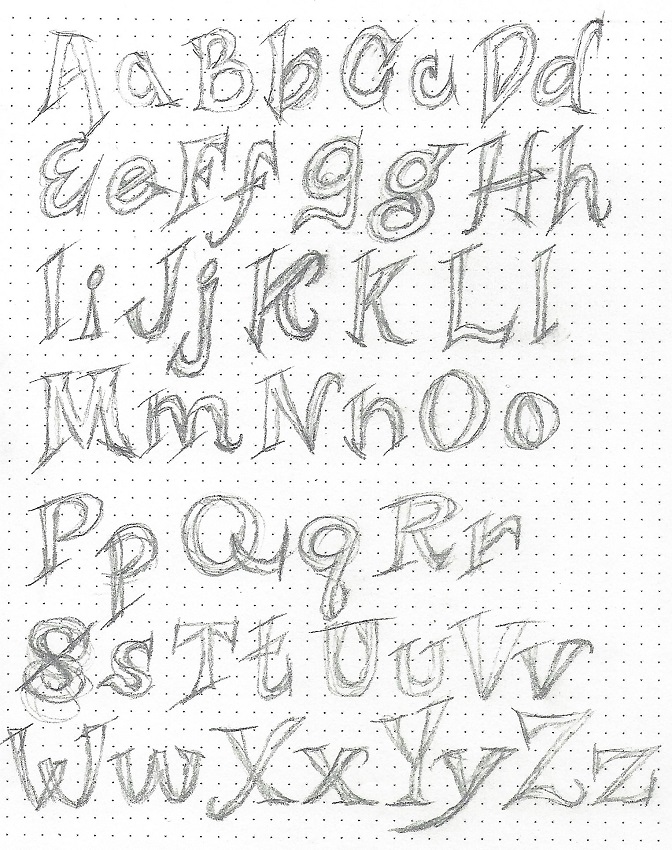
JOSHUA: Day 4b – Your Own Alphabet – Finalized
Use ink to outline all your letters, making final adjustments as needed. Then erase your pencil. You did it!
If you created a funky alphabet like I did, it would look great if the letters were allowed to rise above and sink below the baseline when using them on a project. Use your new alphabet to write your full name, fitting the letters into shapes to create word art.
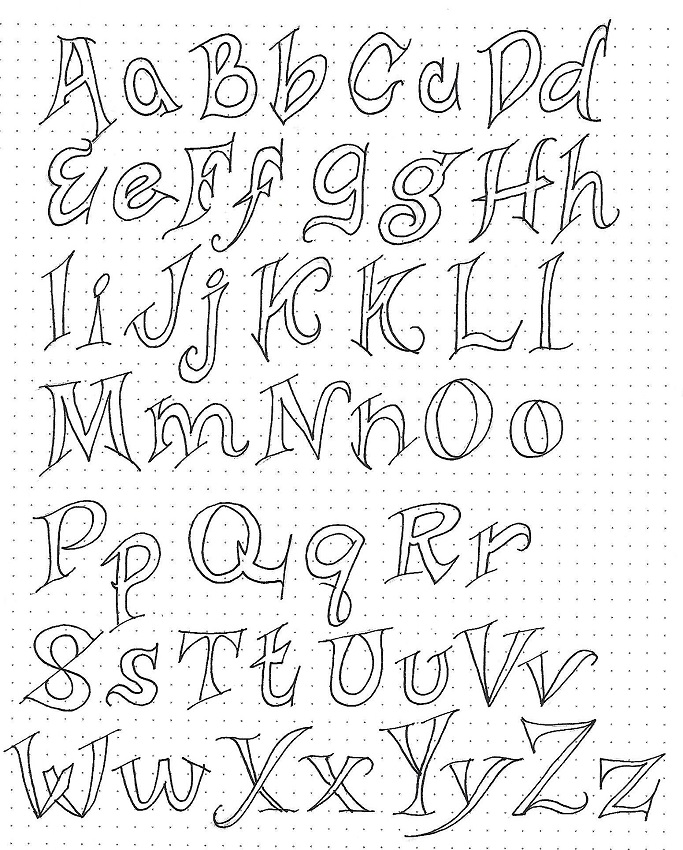
JOSHUA: Day 5 – Building Blocks – In Your Bible
Today we will combine any of the block lettering techniques learned to date (basic blocks, shadowed blocks, lower-case blocks, colored blocks, original alphabets) for use on a Bible page in the book of Joshua. I used mine with the Drawing Room lesson on ‘Rocks’ to illustrate the story of creating a memorial to the miracle of crossing the Jordan on dry land. That verse had exactly 12 words to fill the 12 stones!
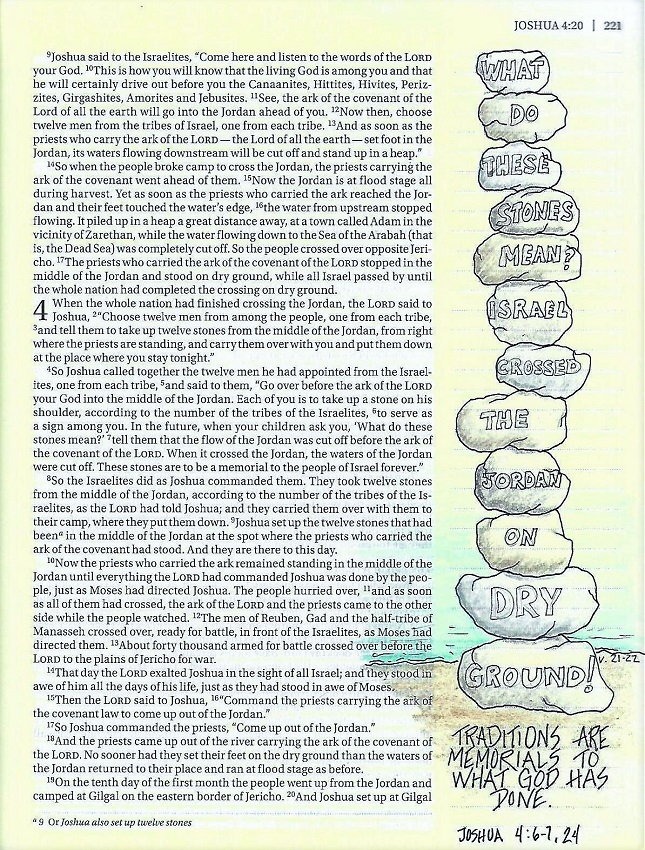
Another lesson completed.
Ddd
Posted by studio3d@ccgmail.net
at 1:00 AM PST
